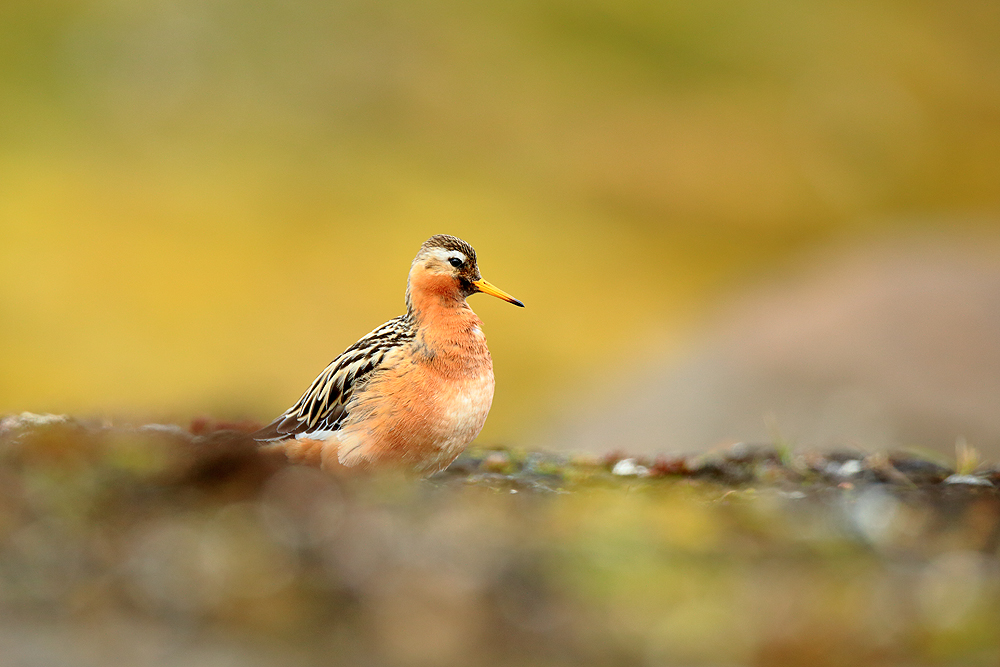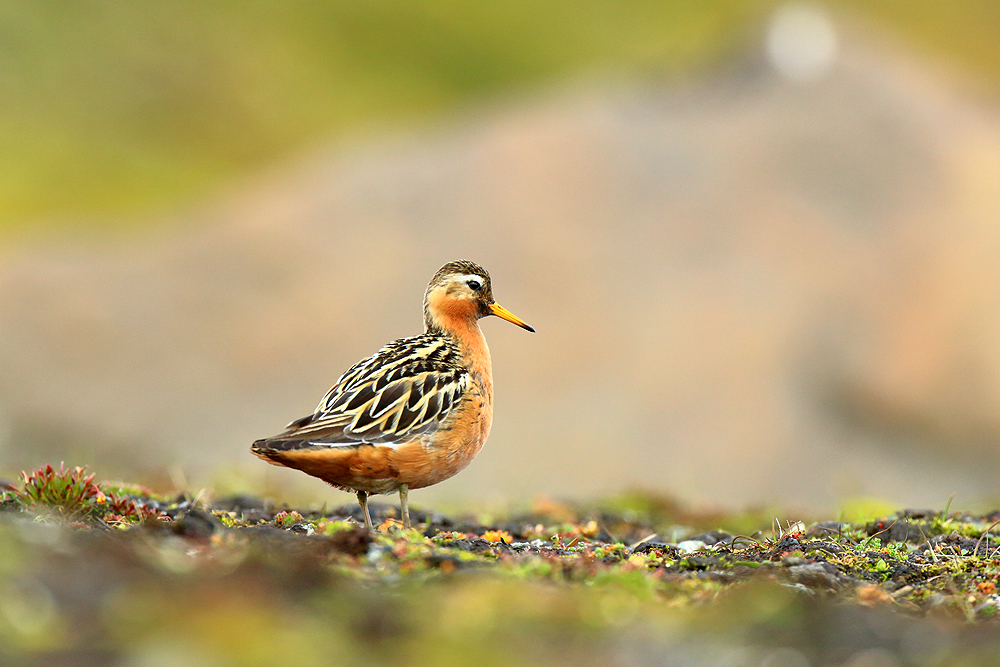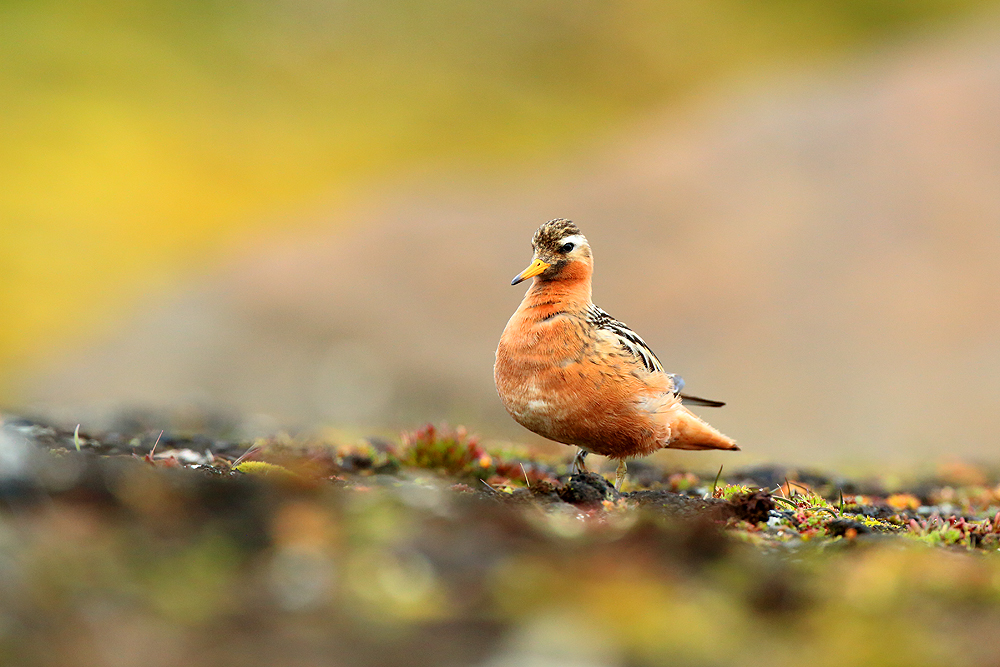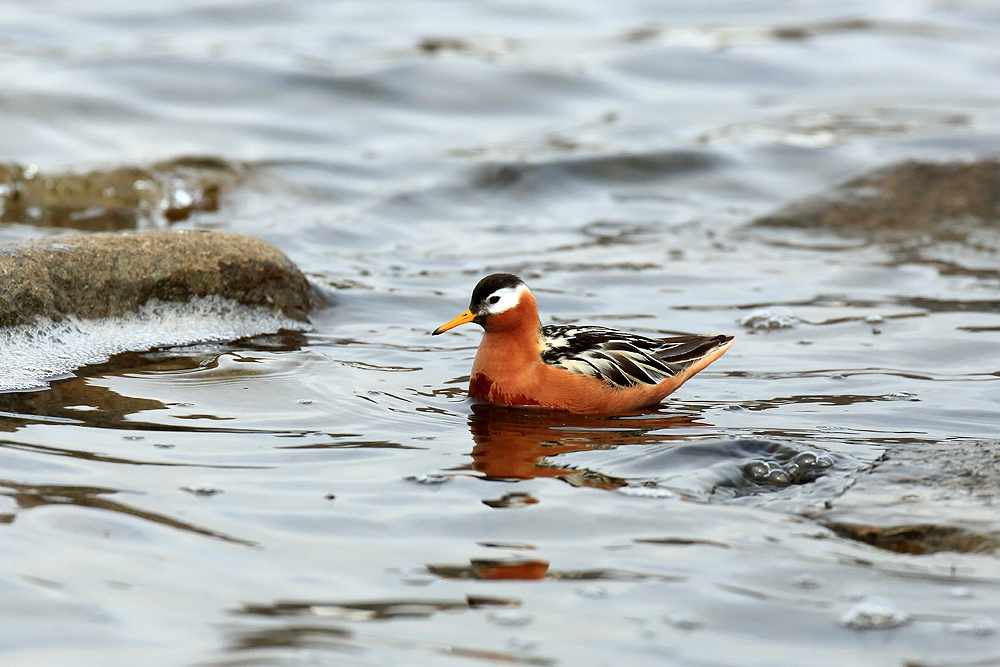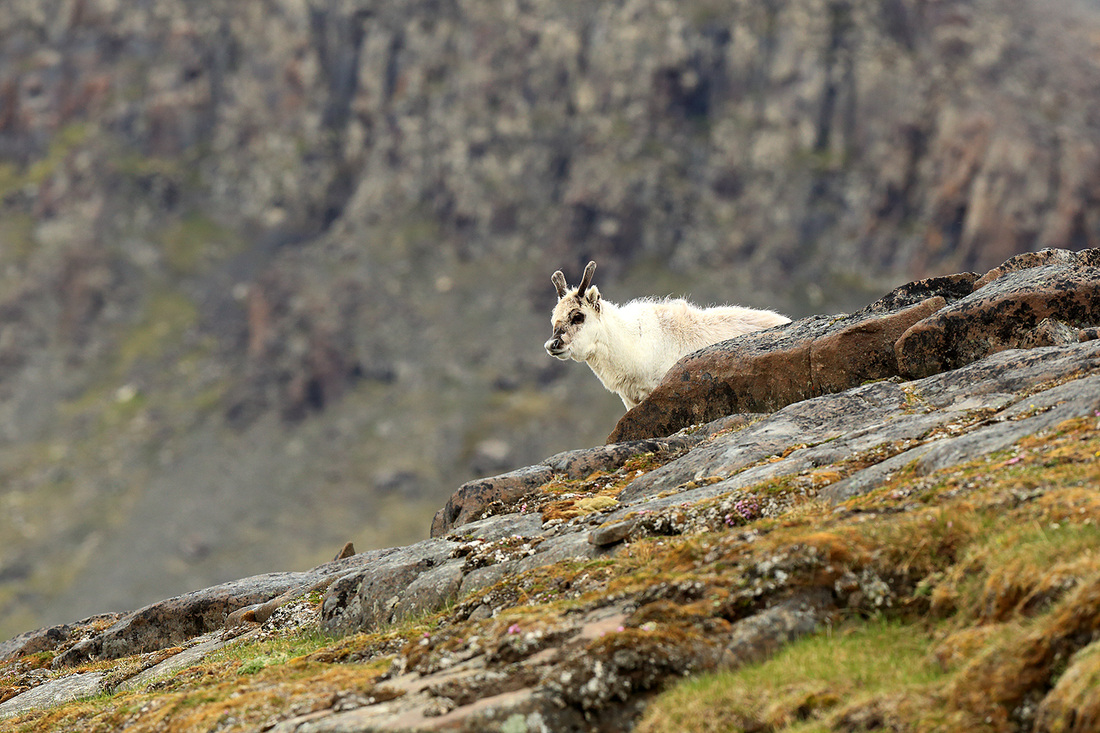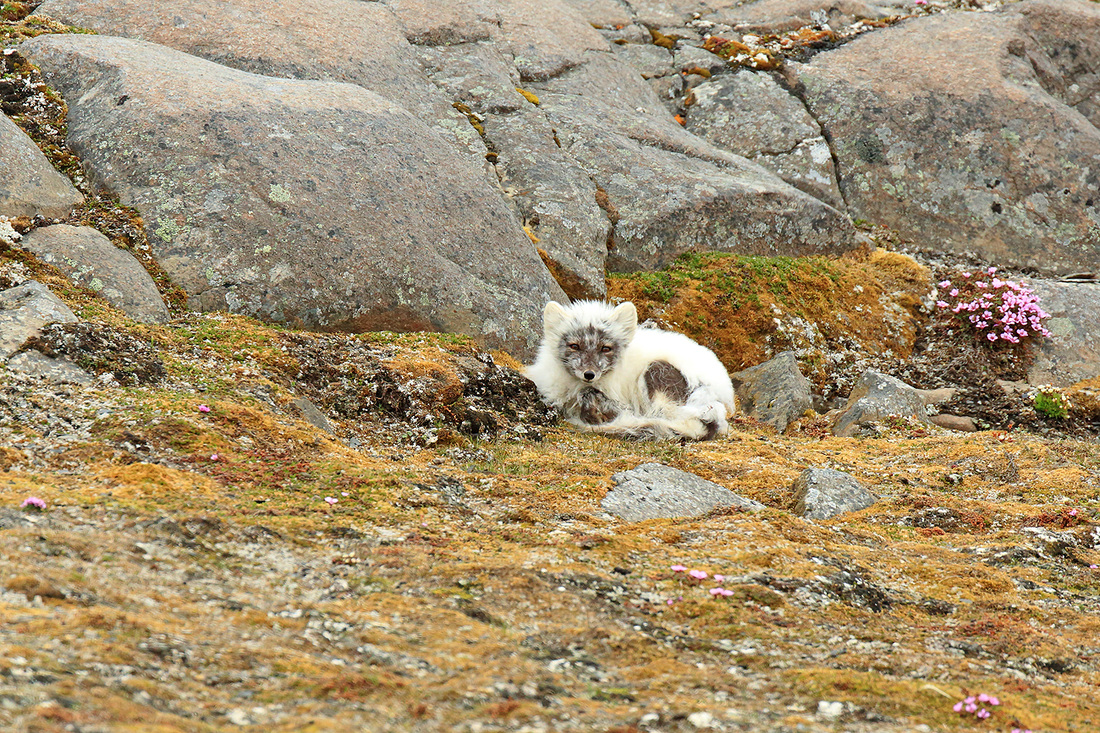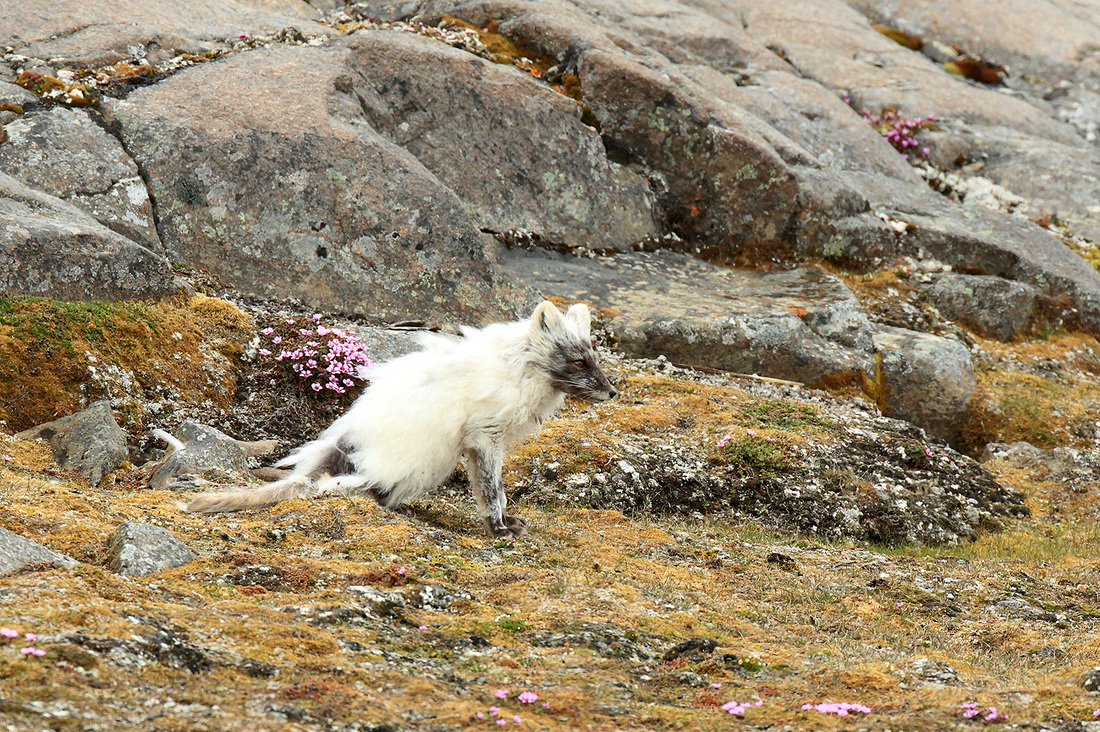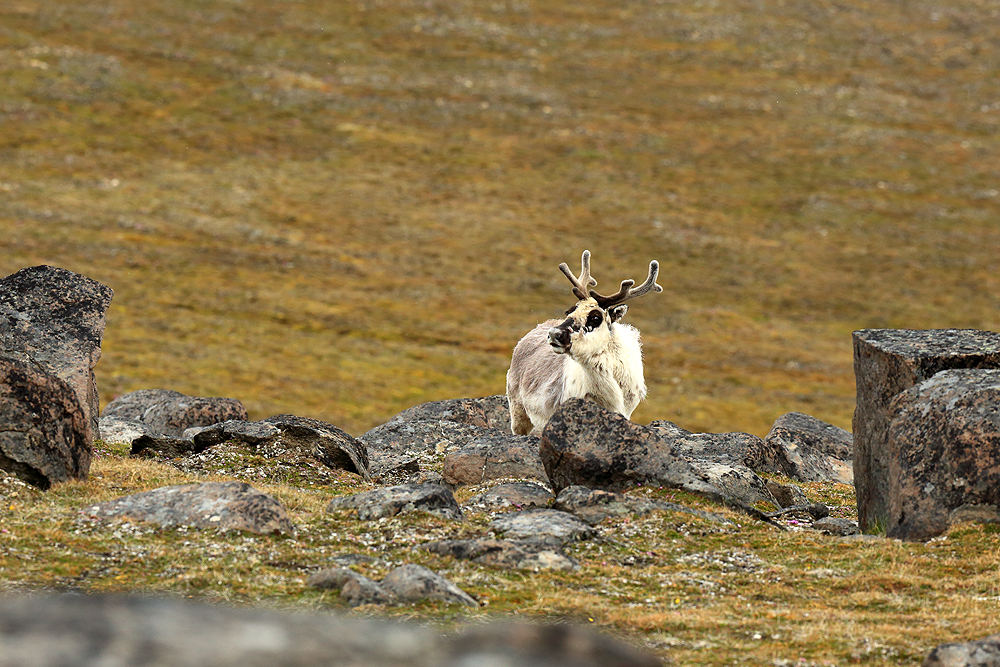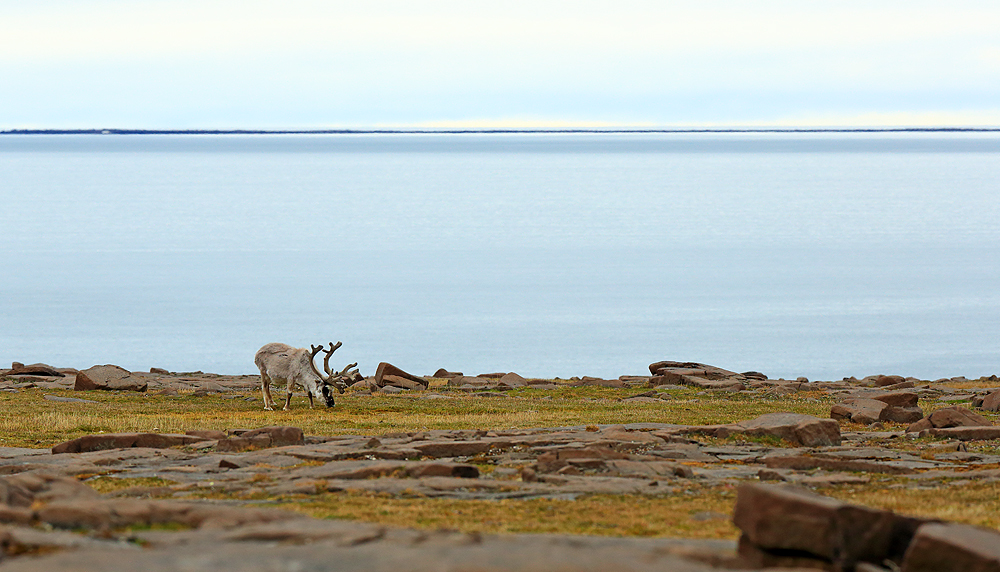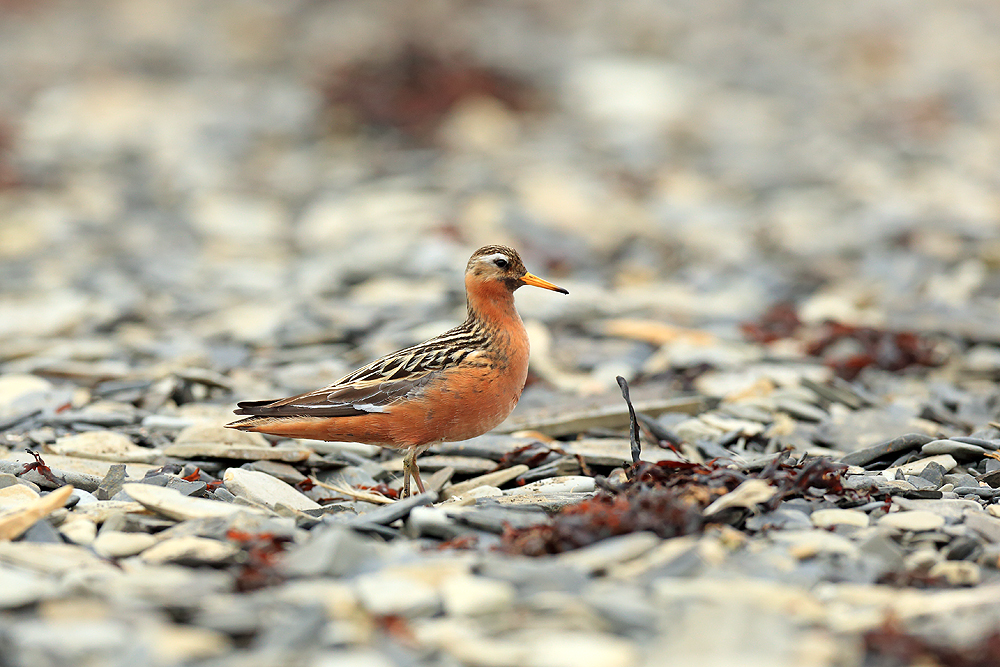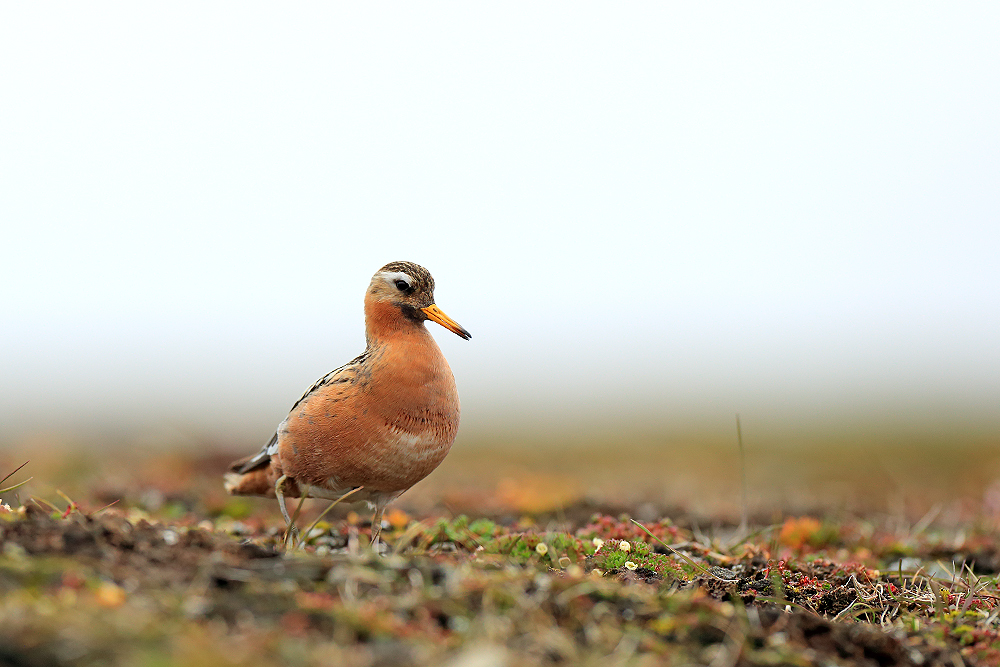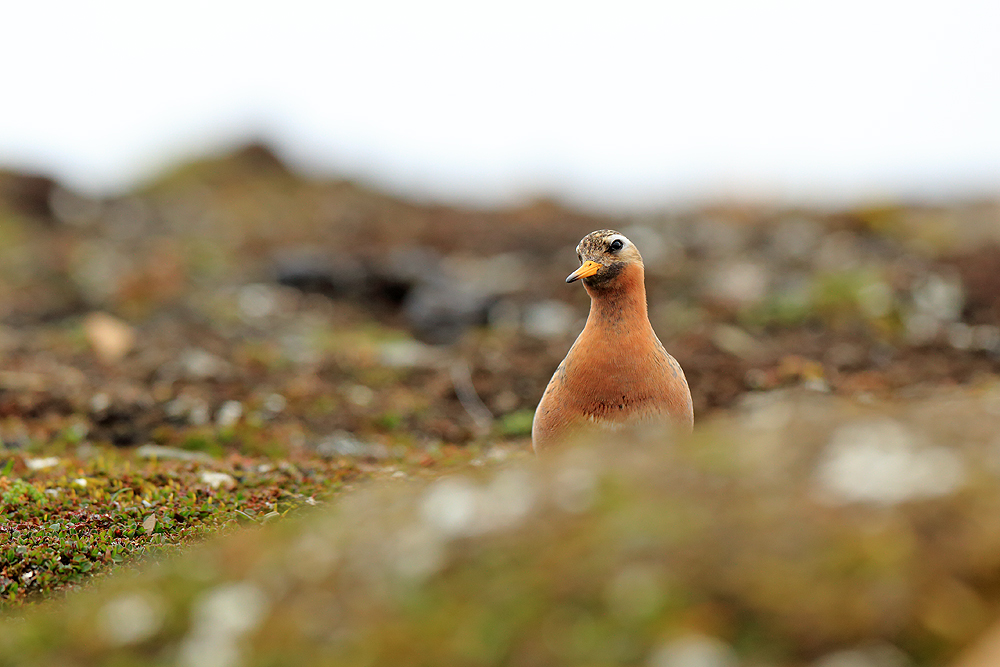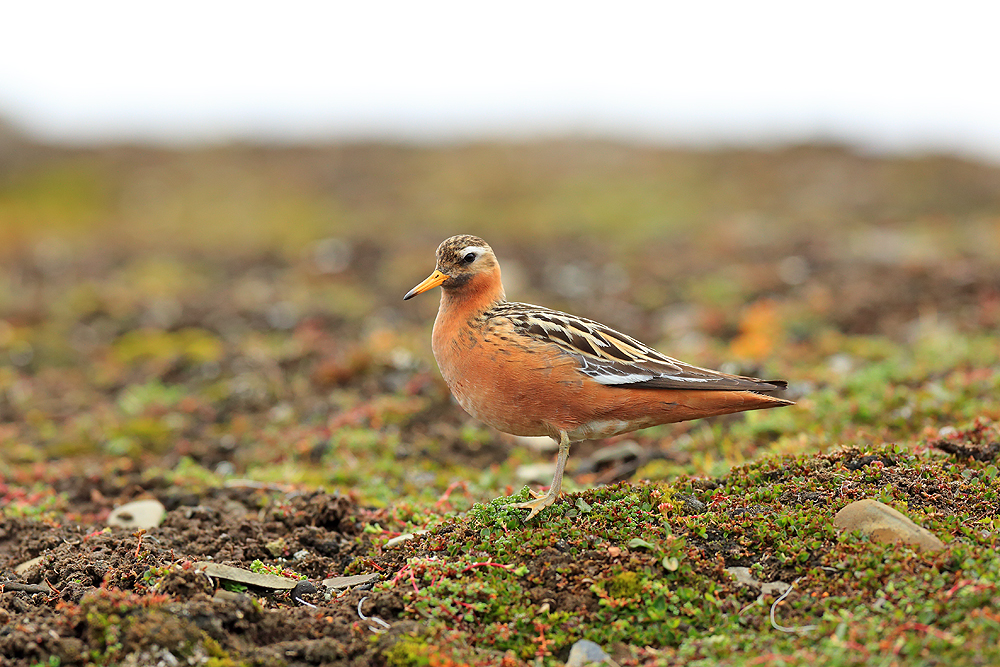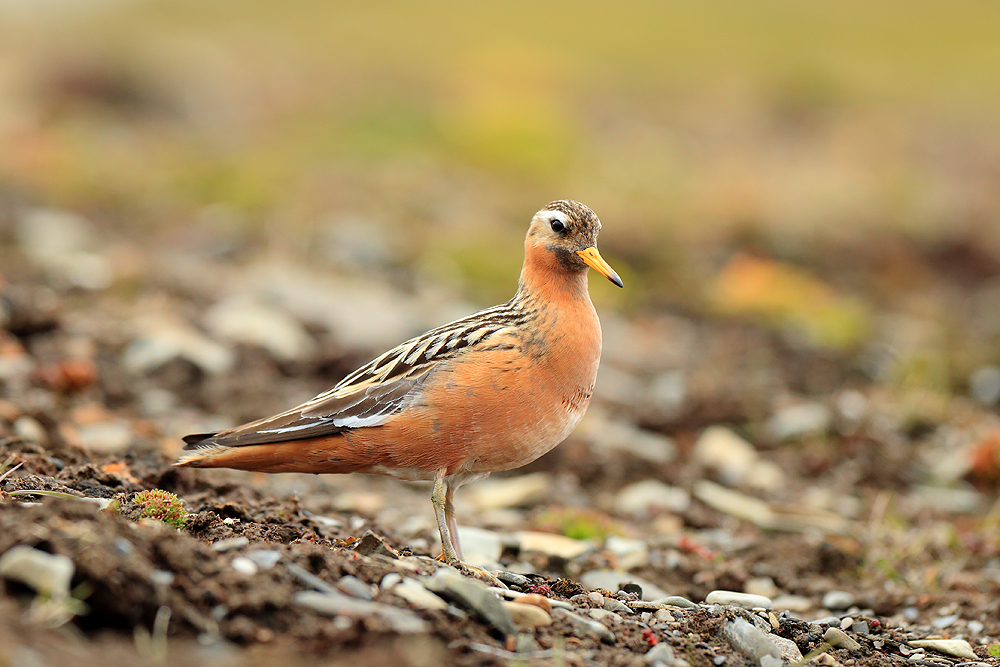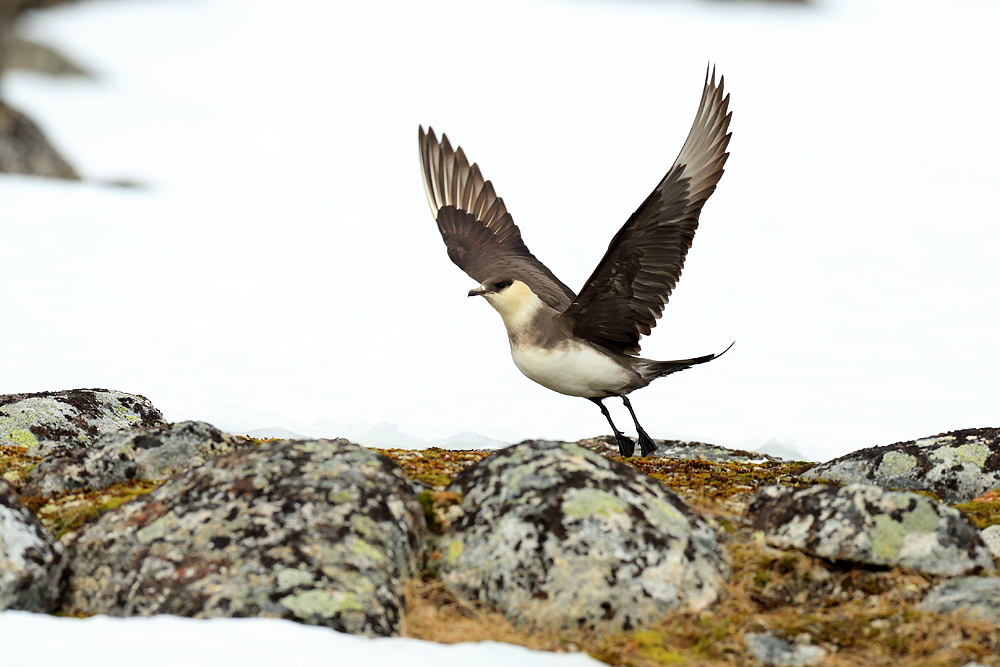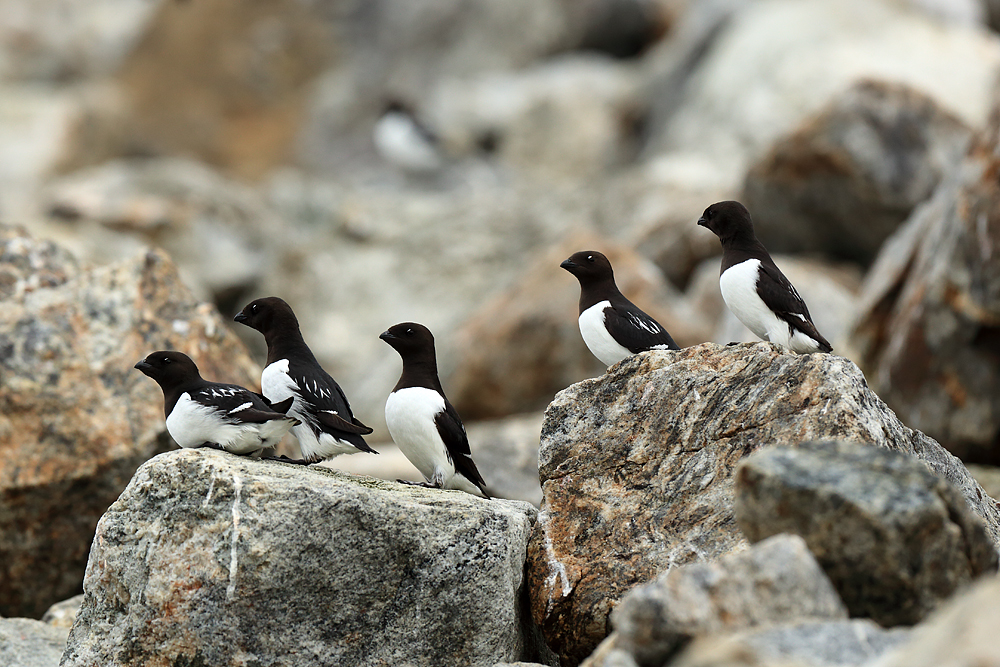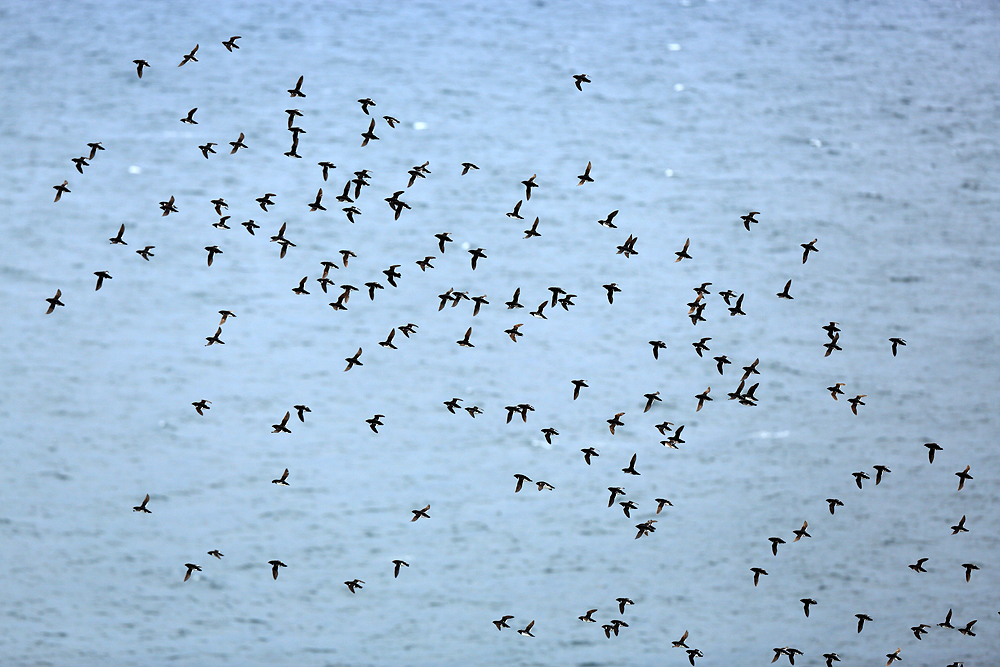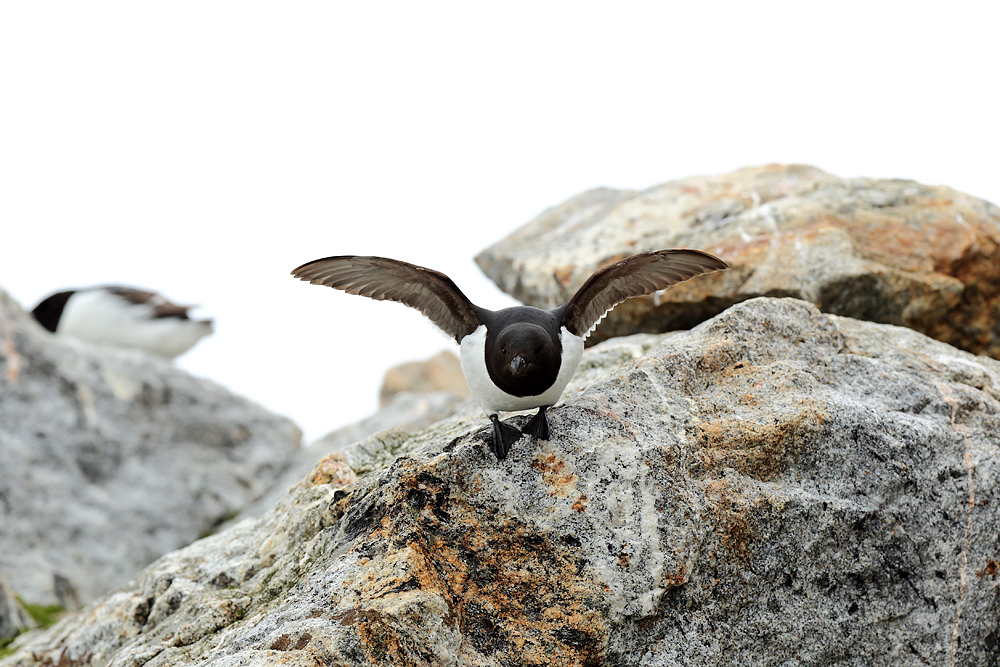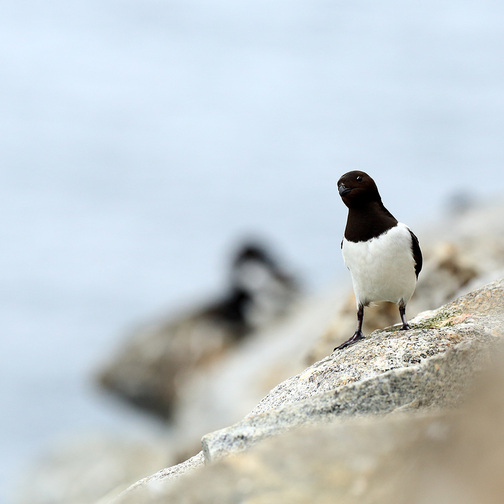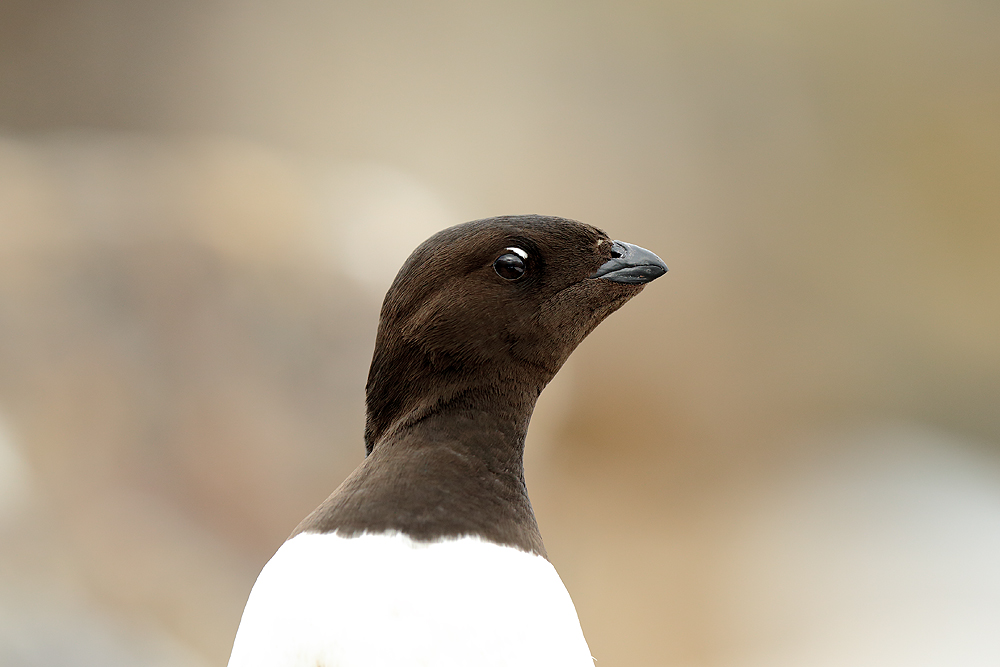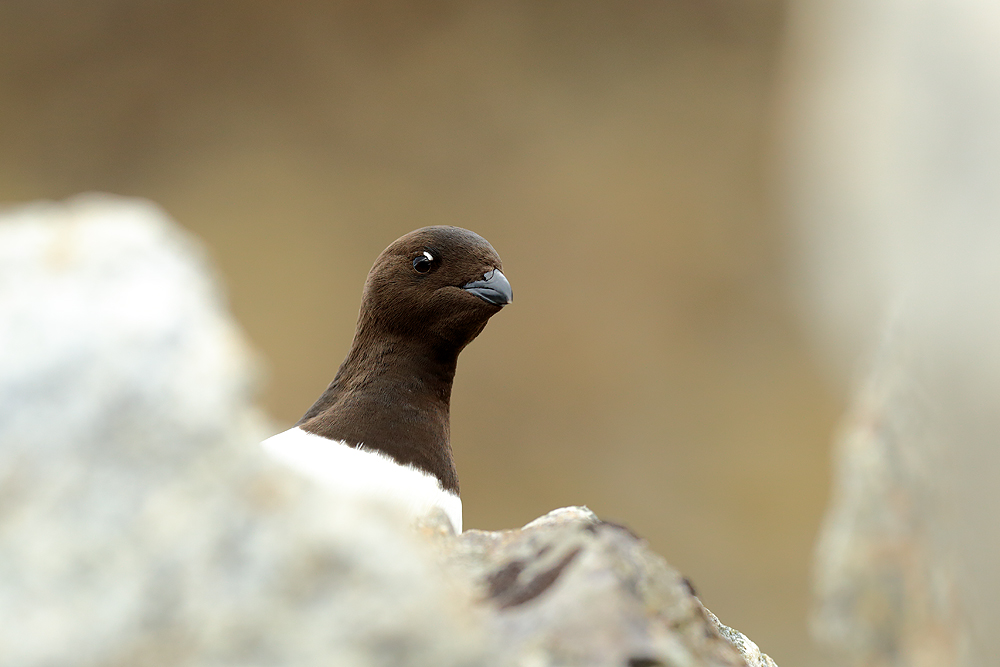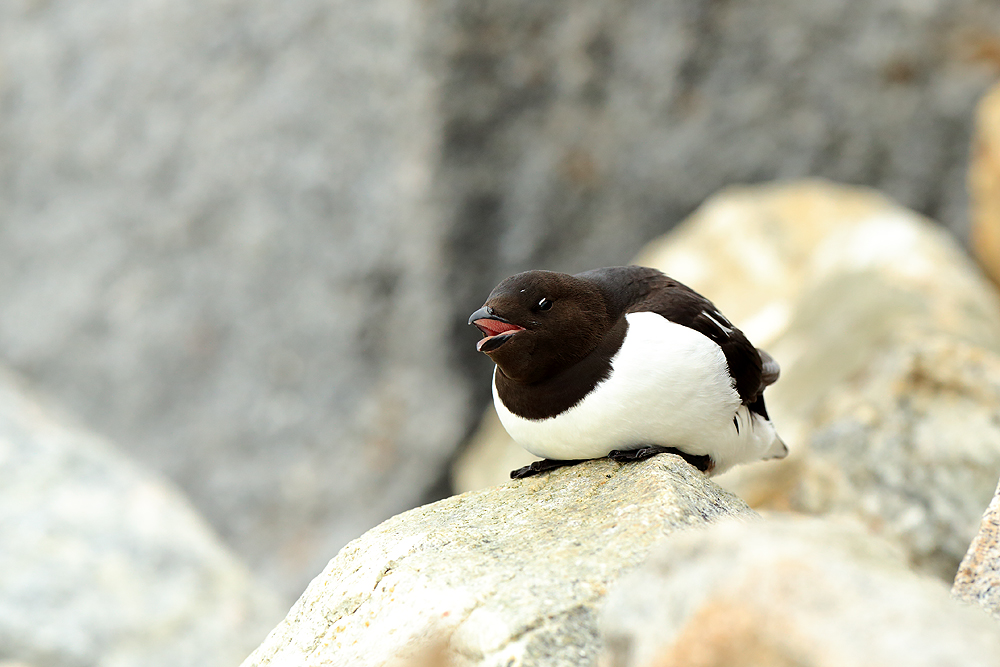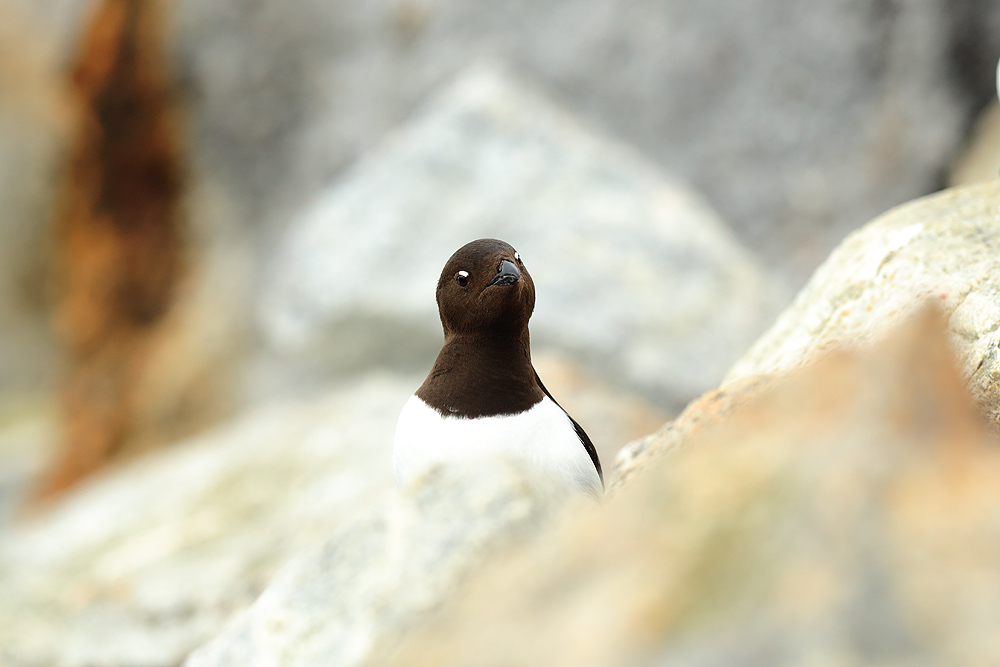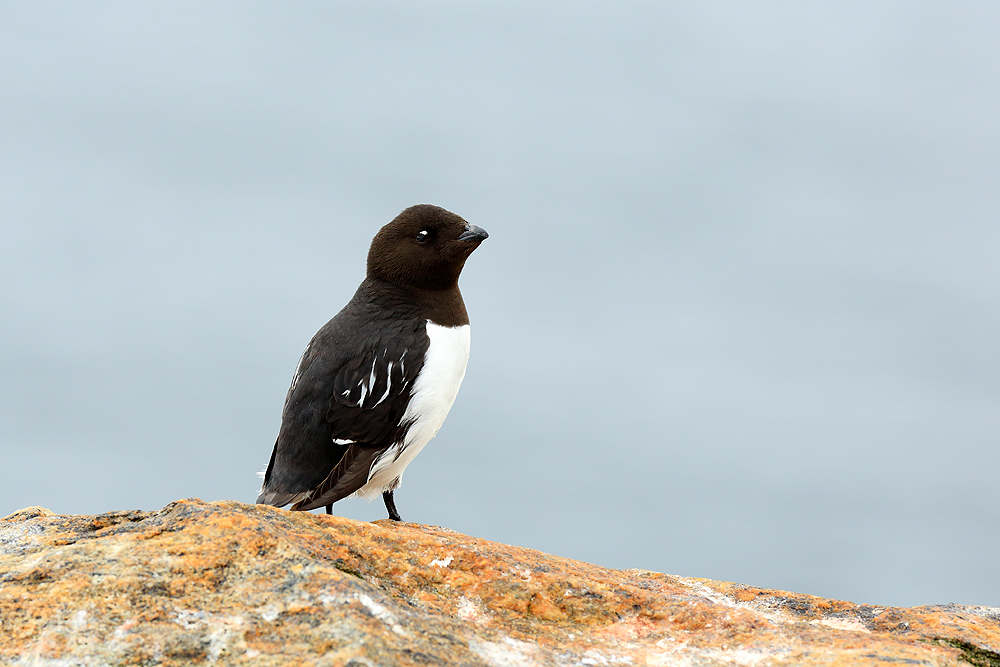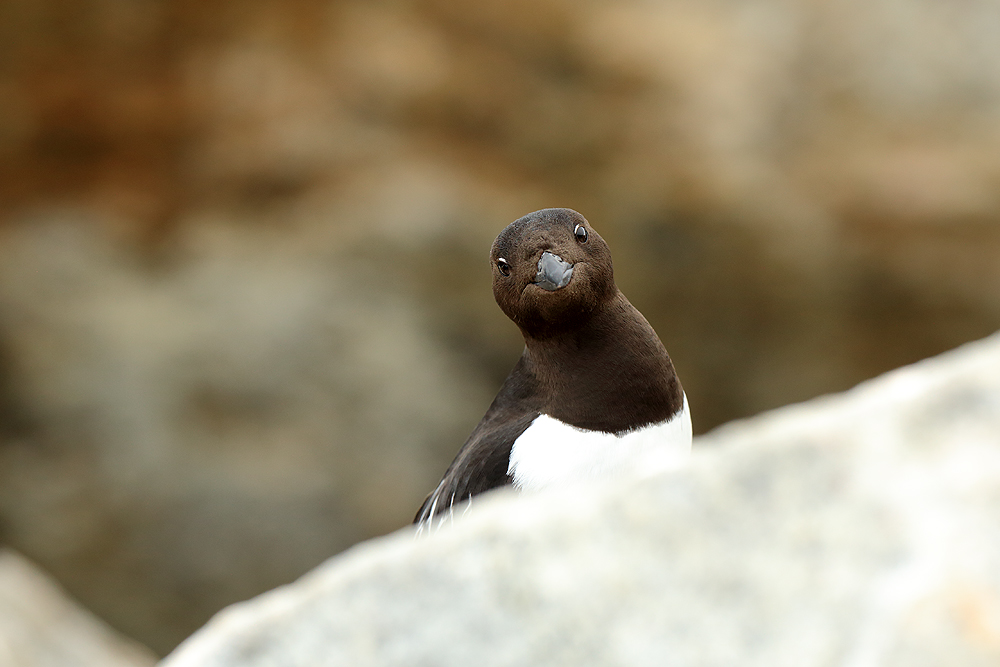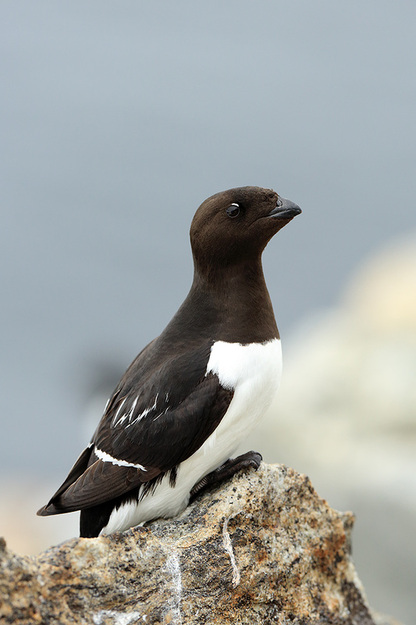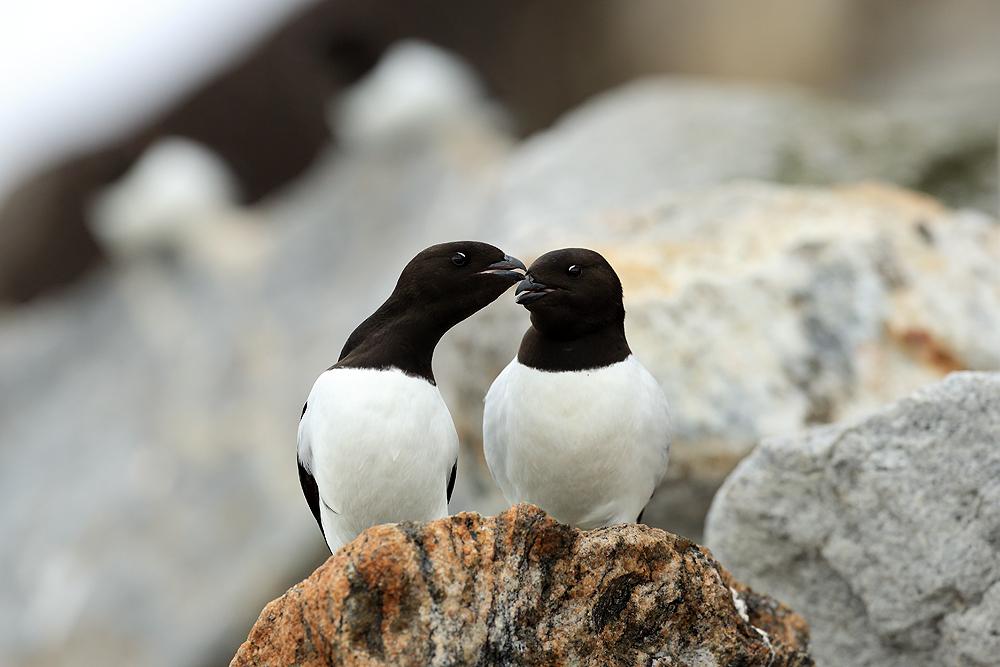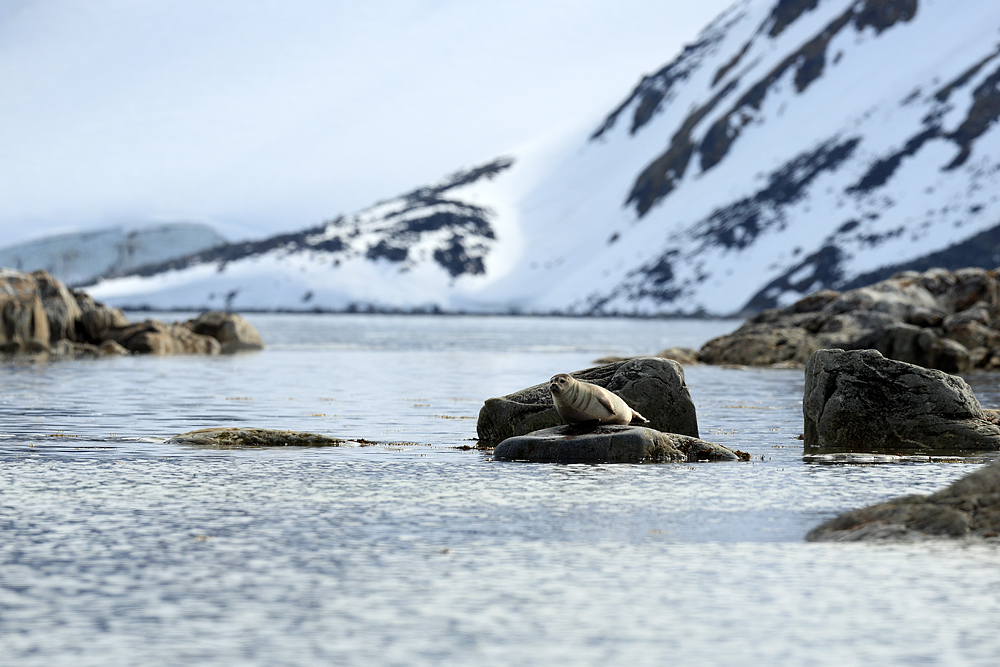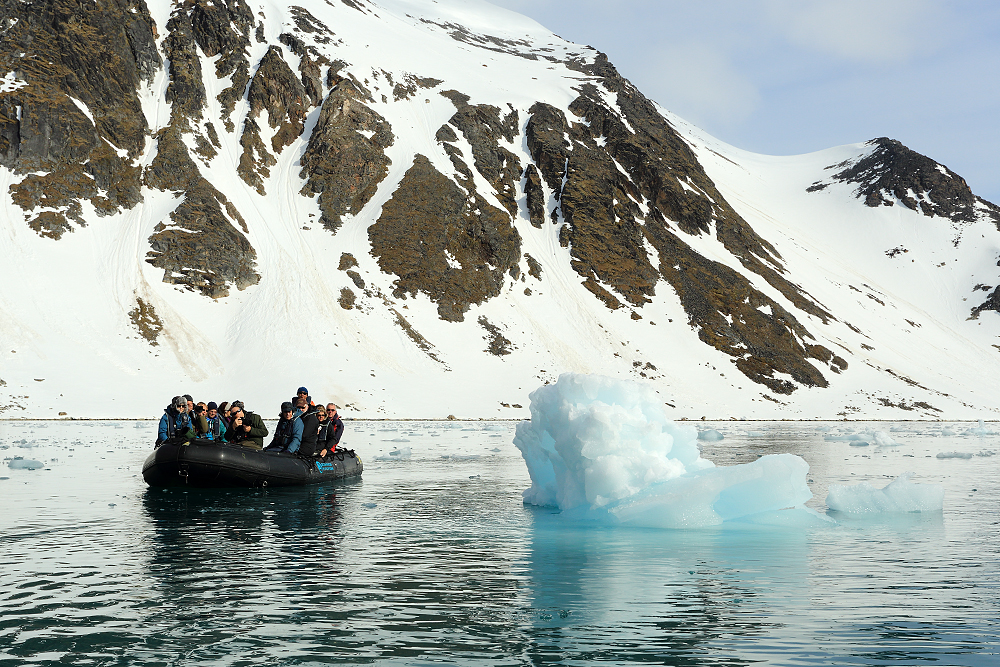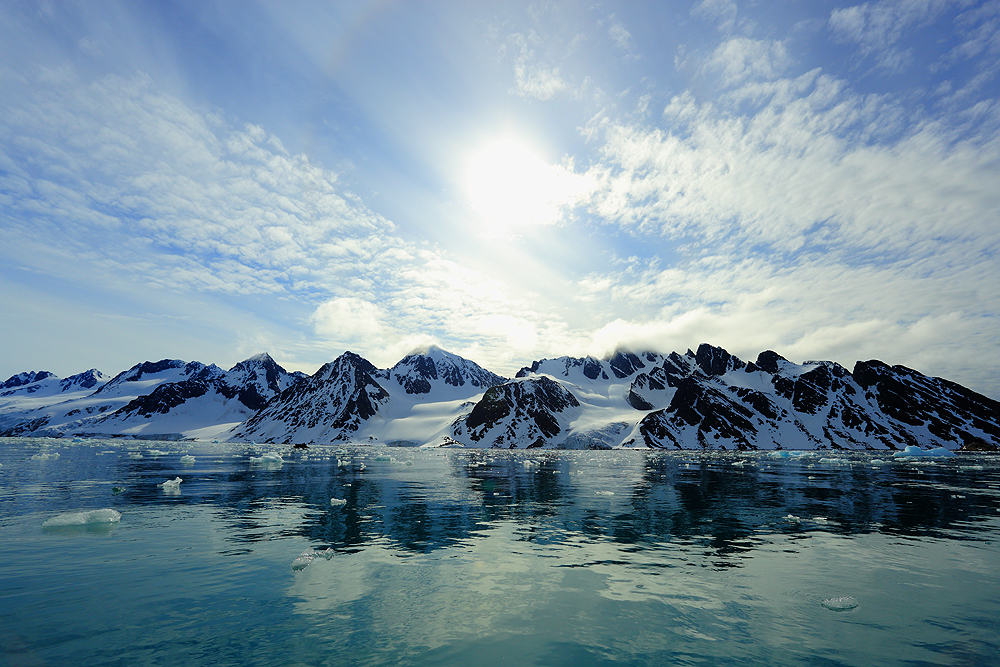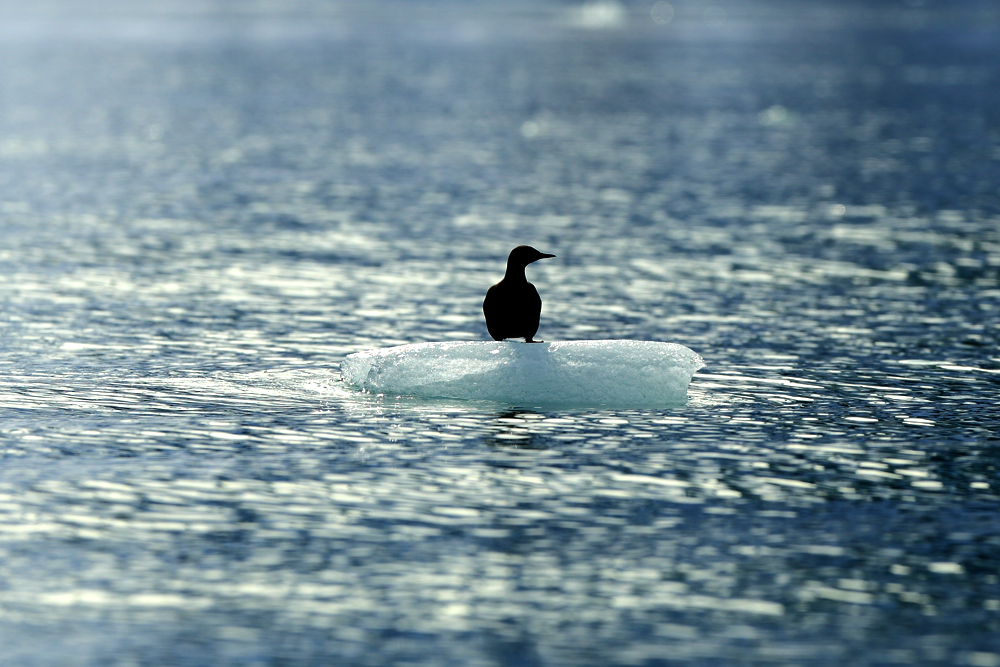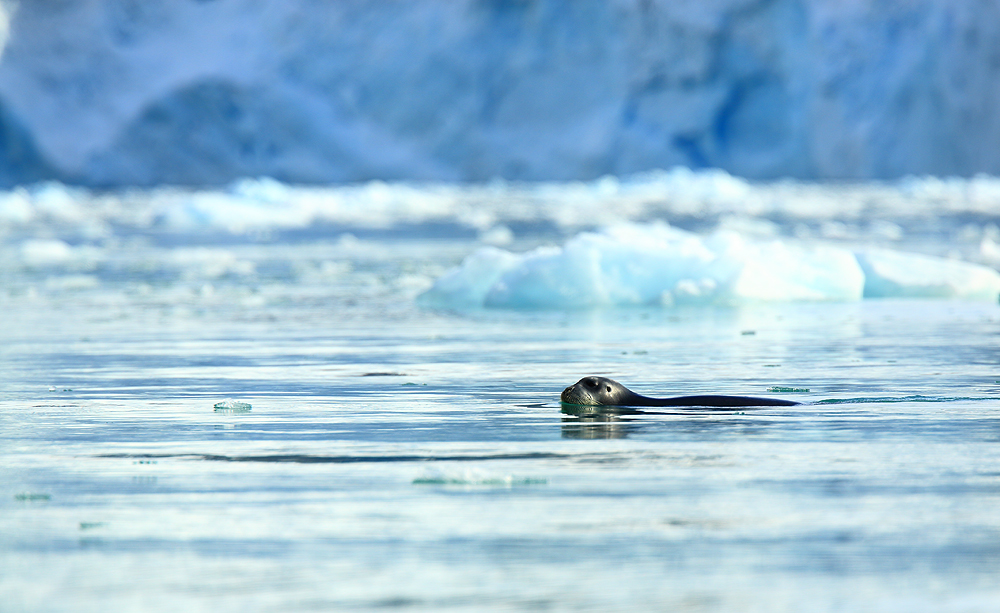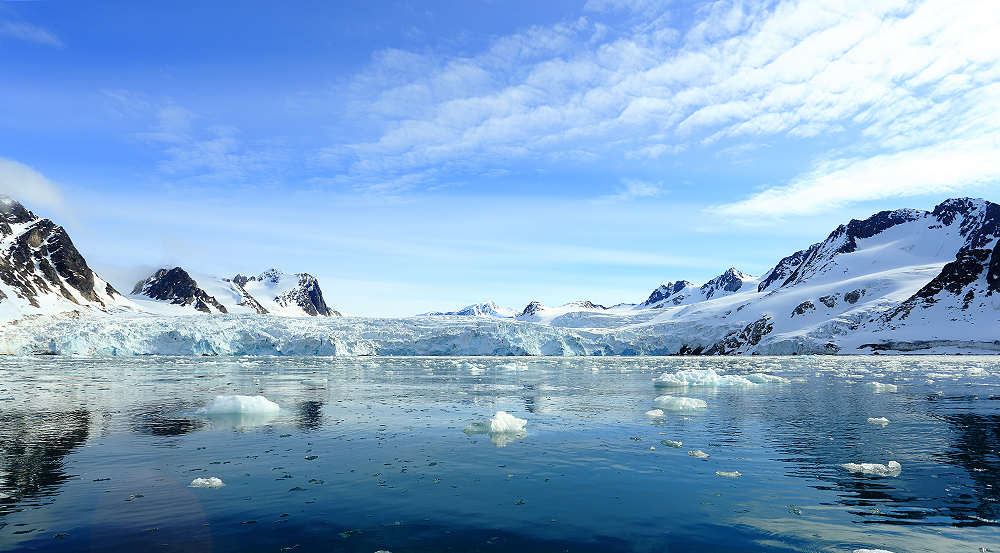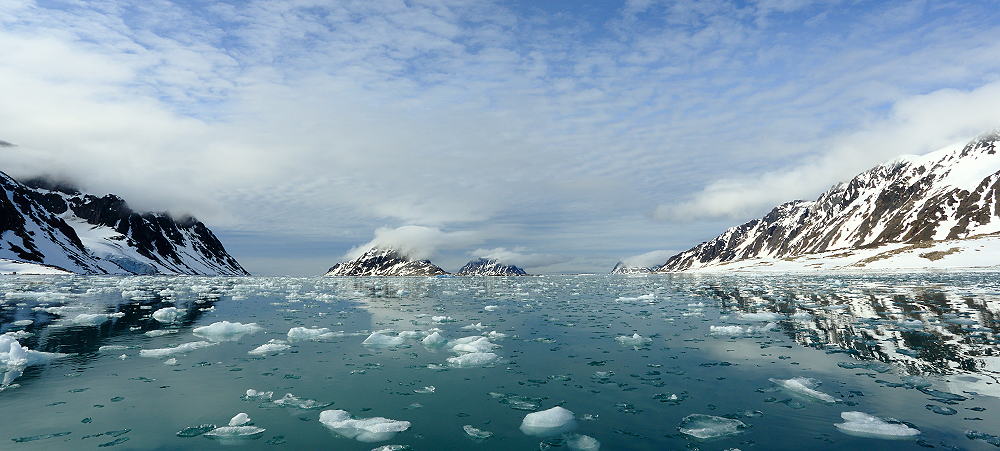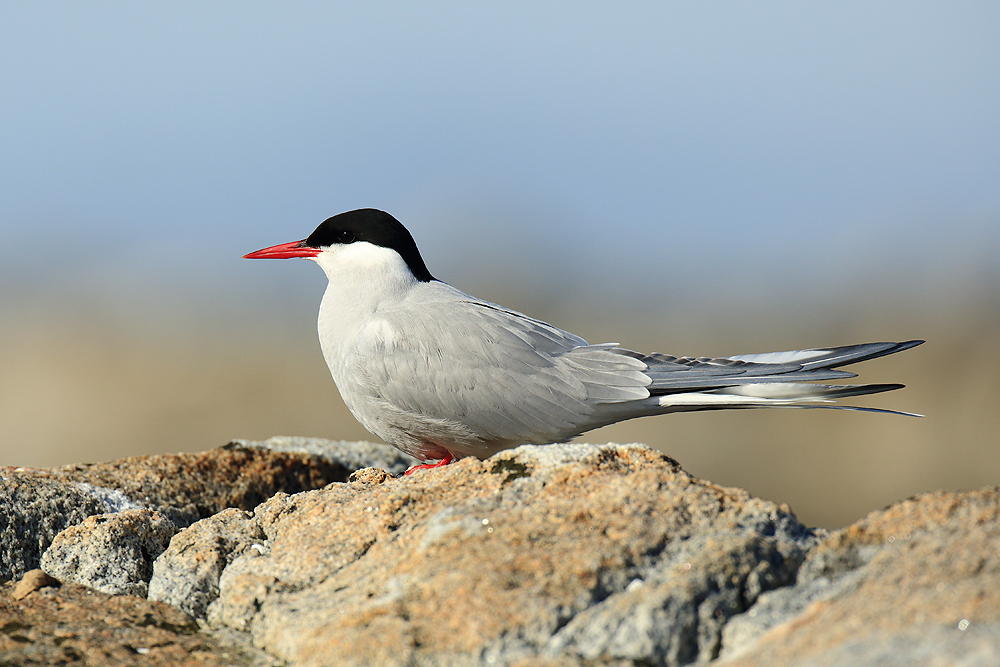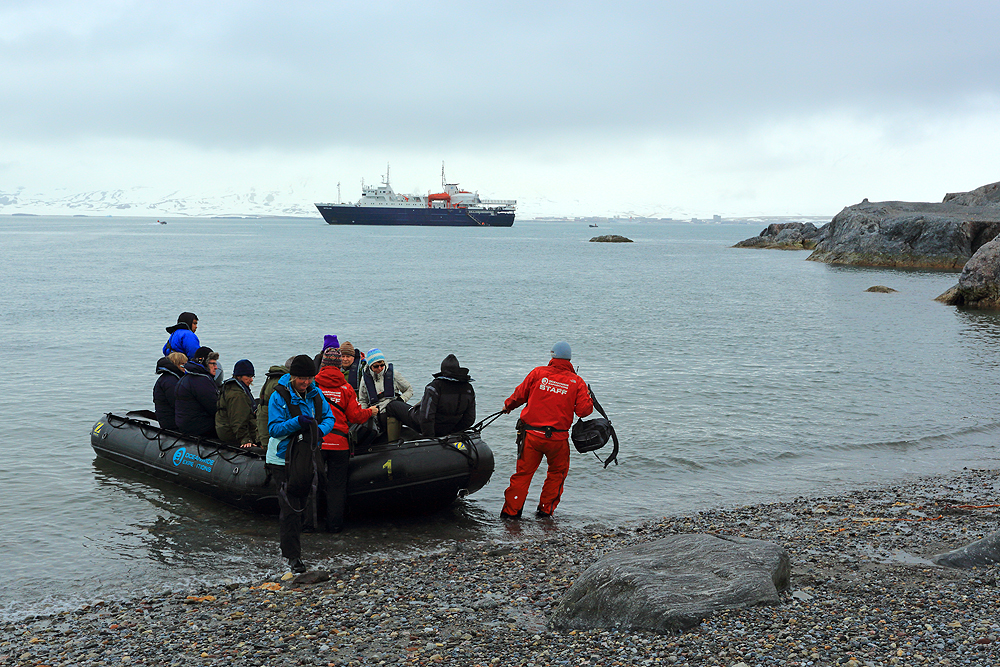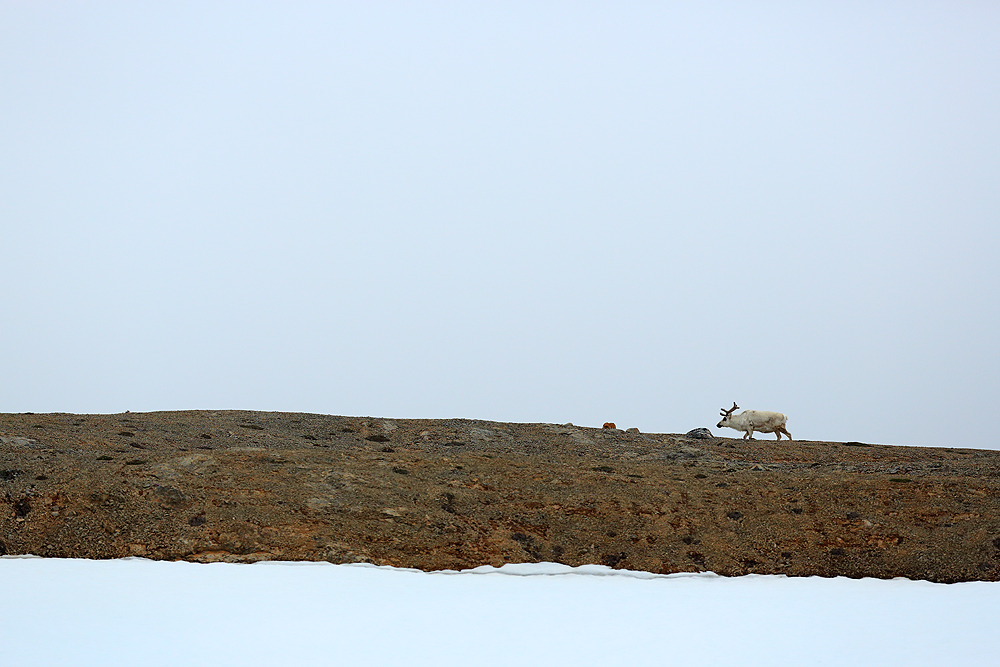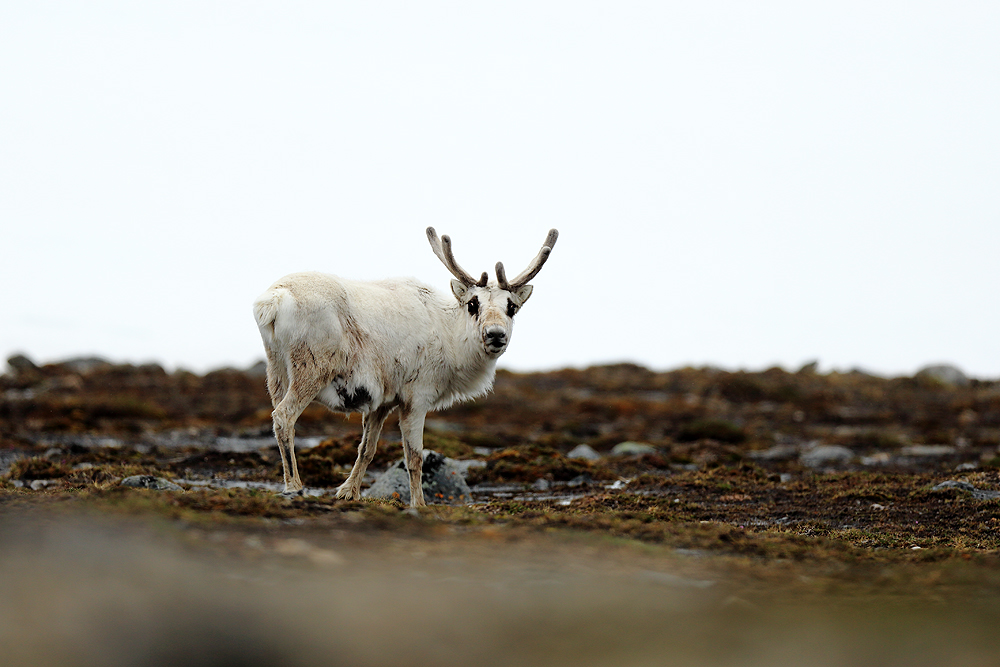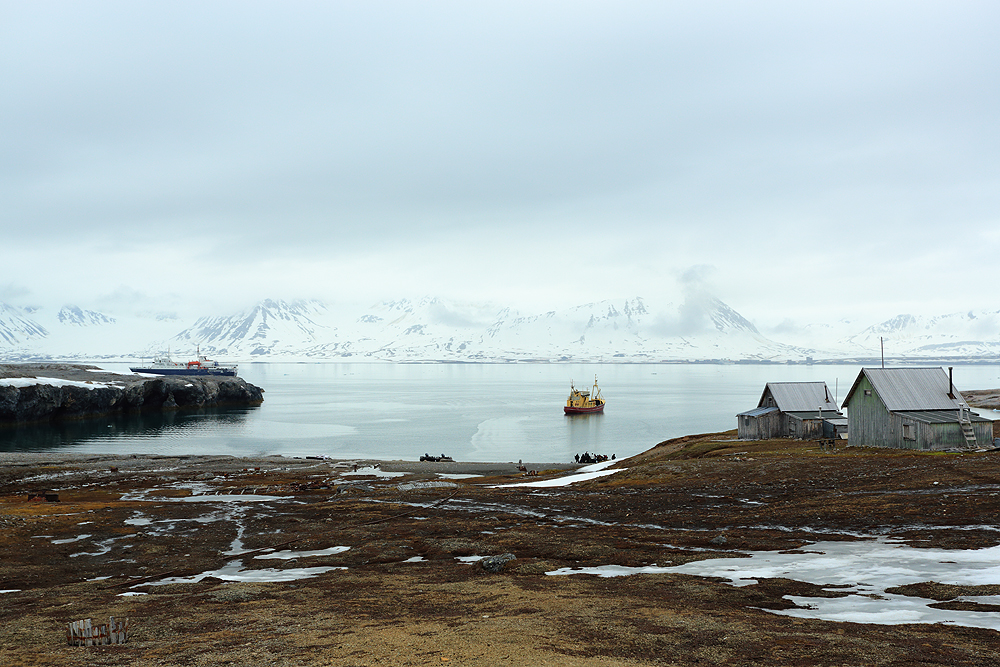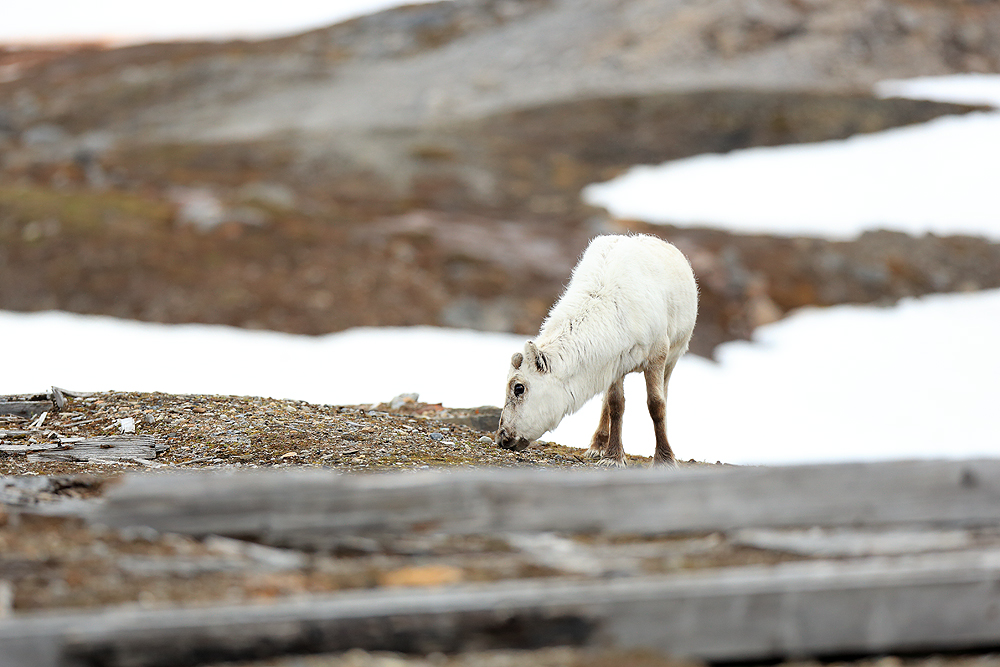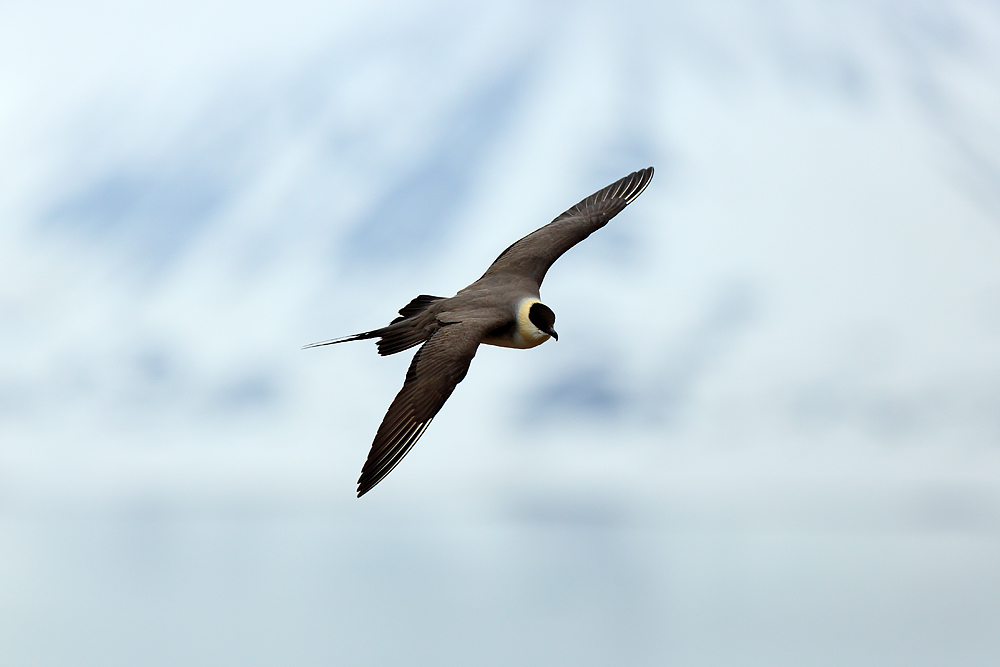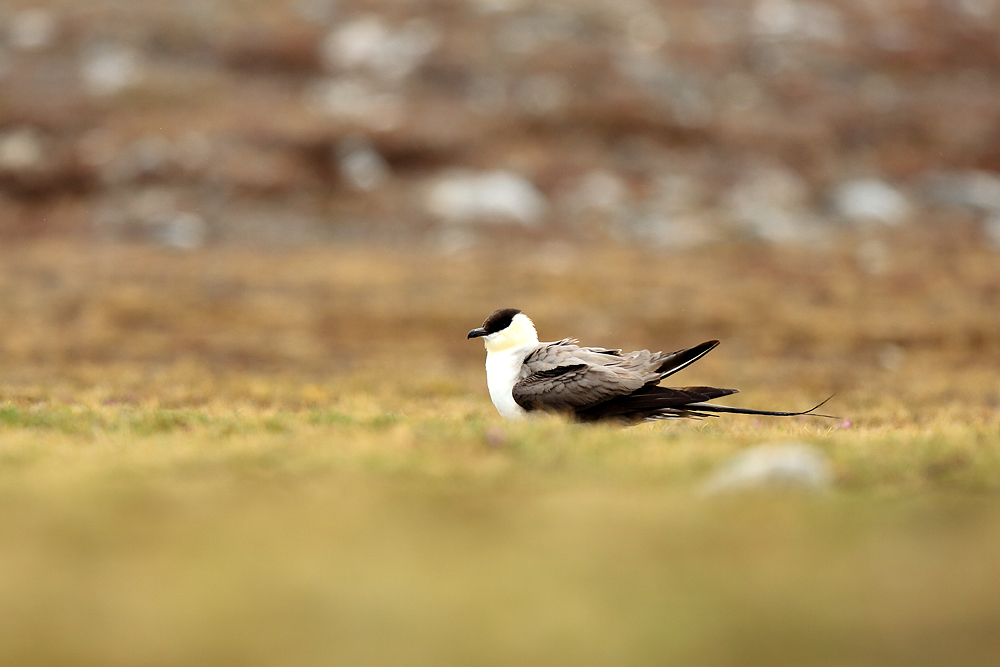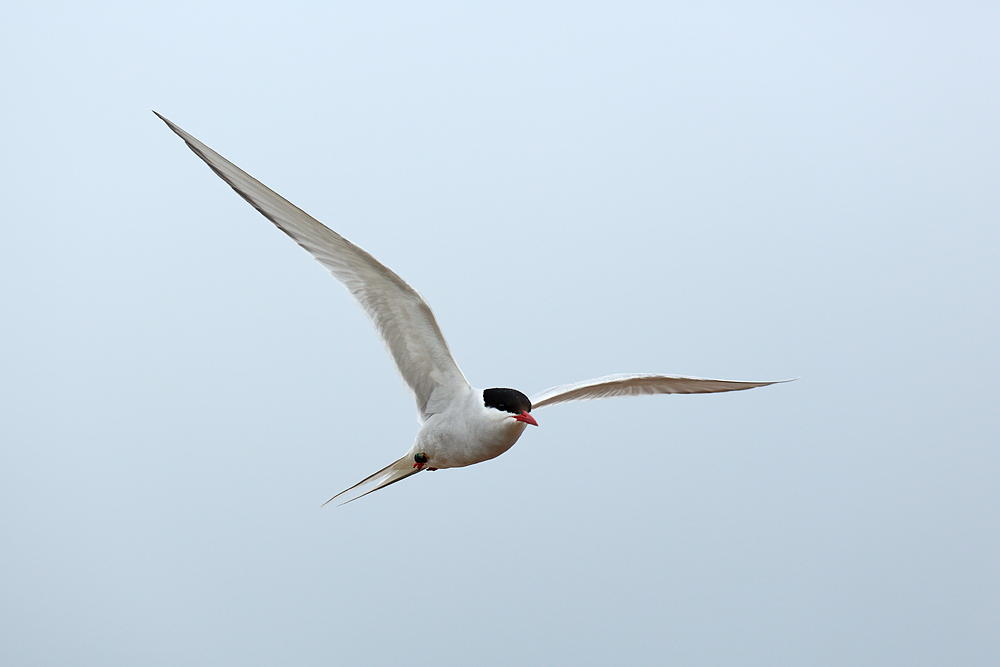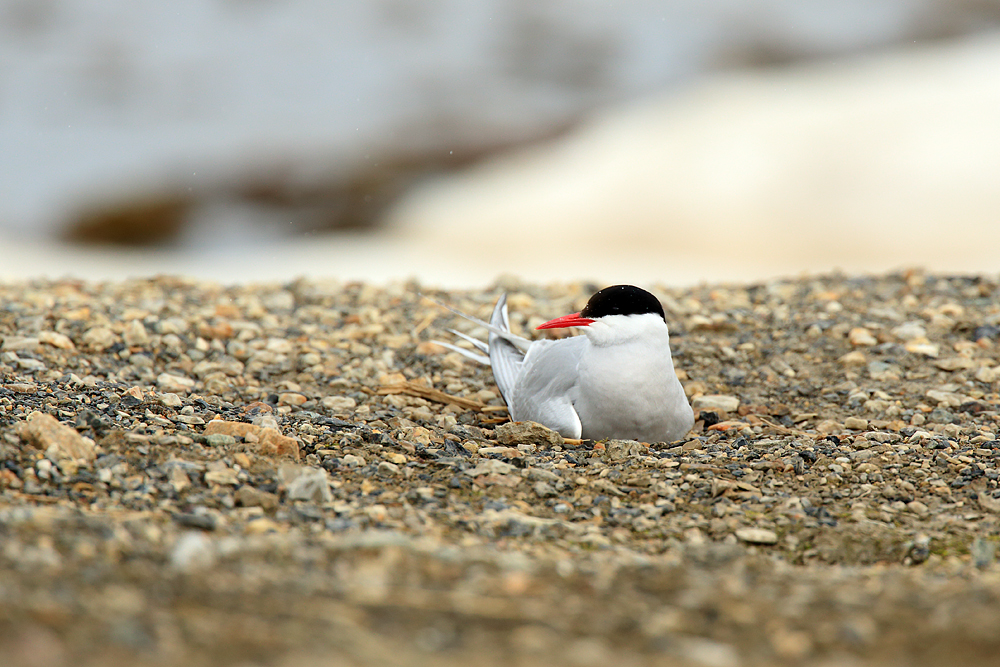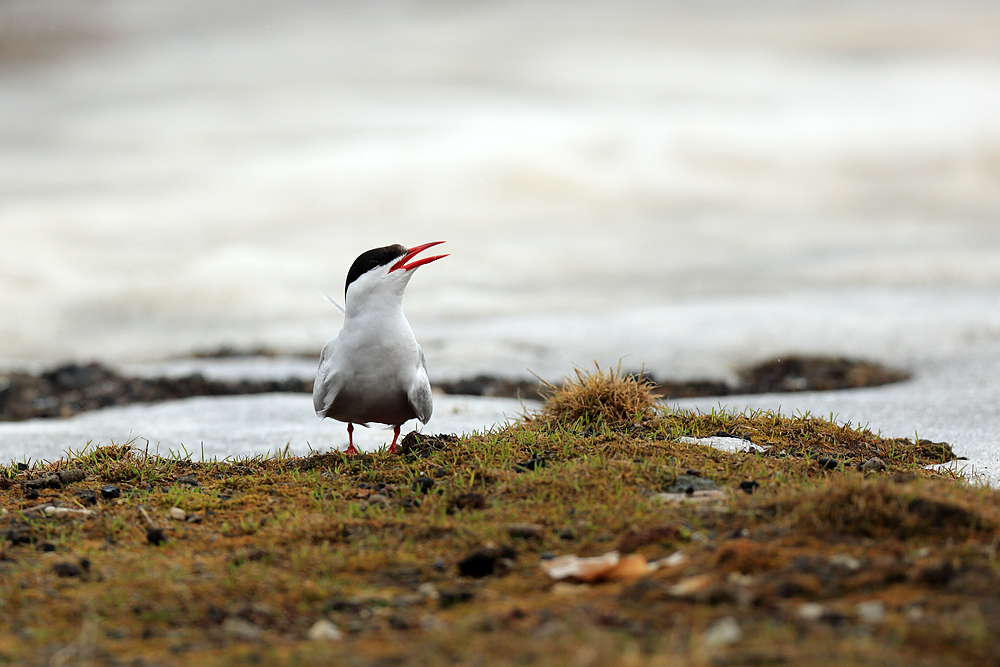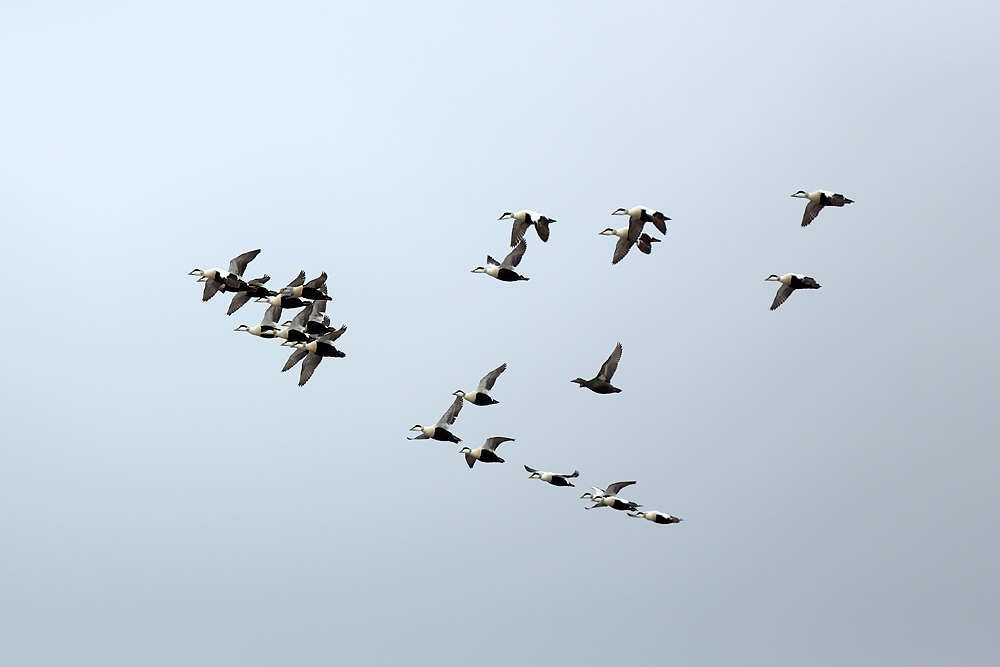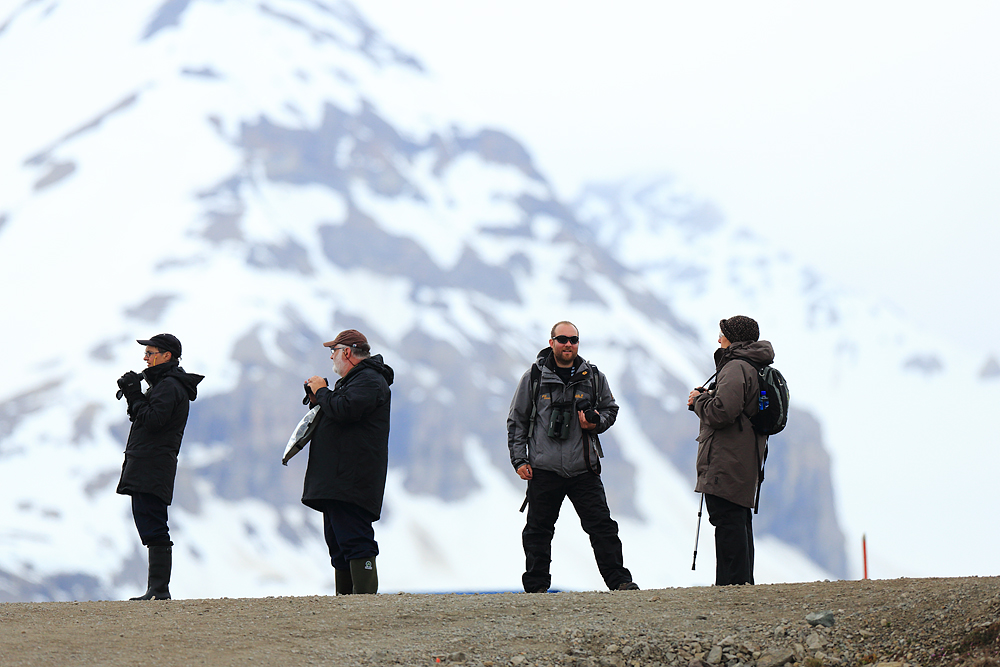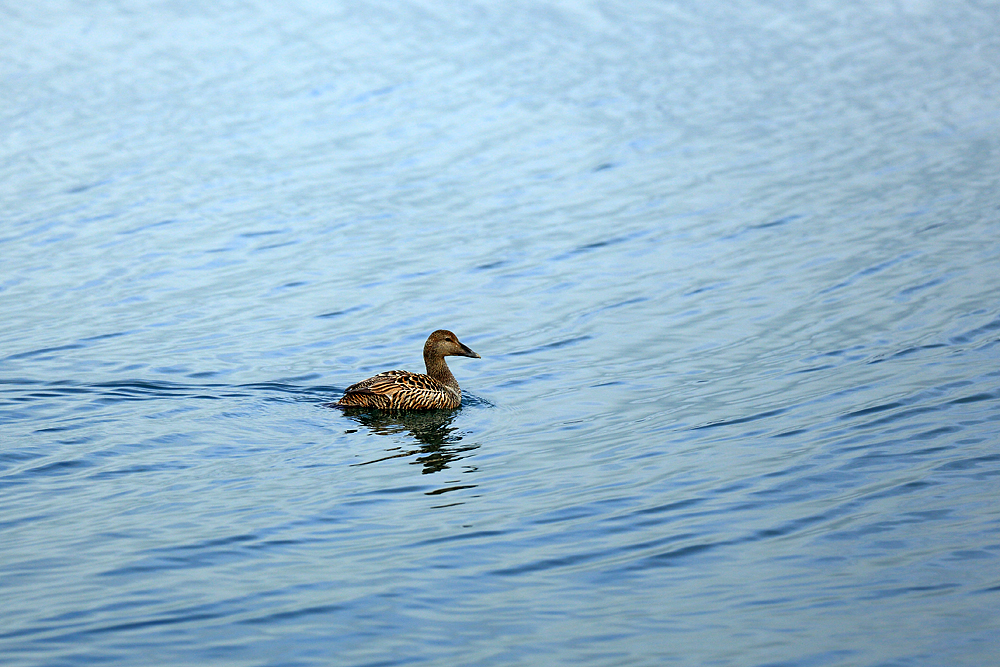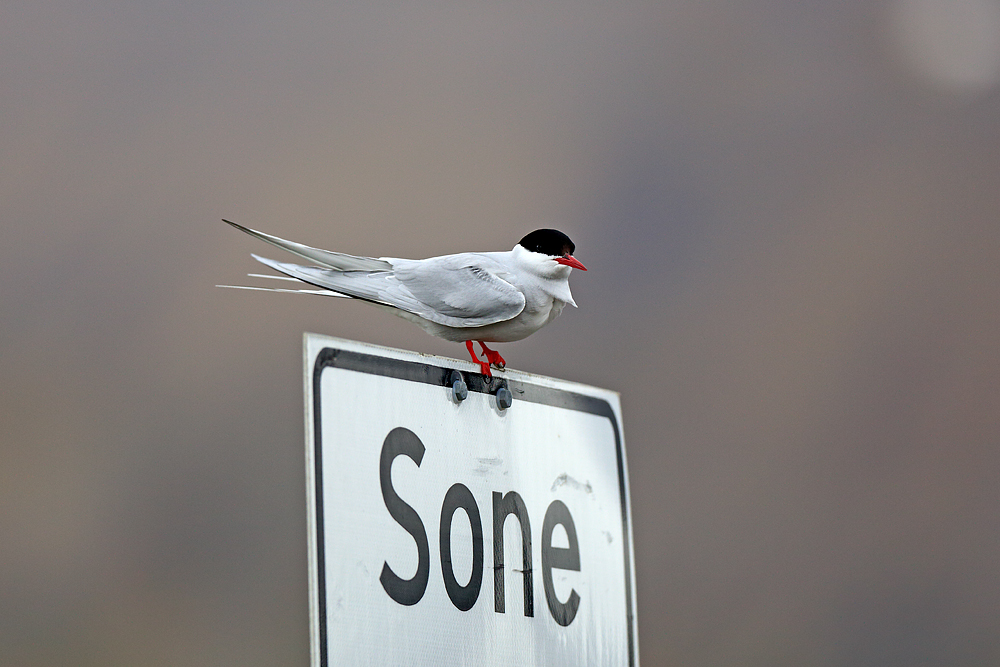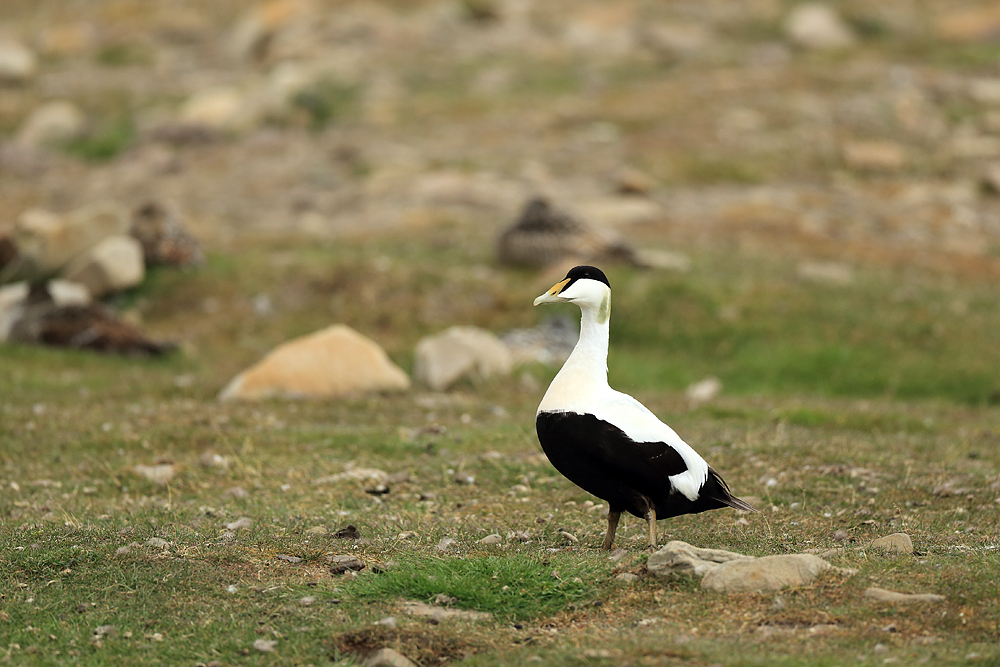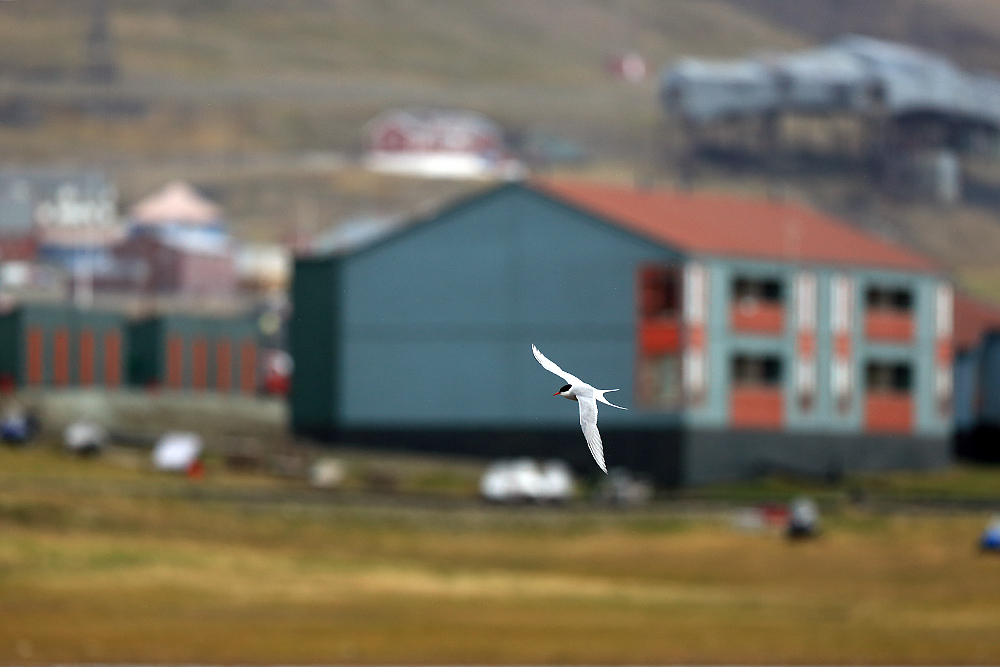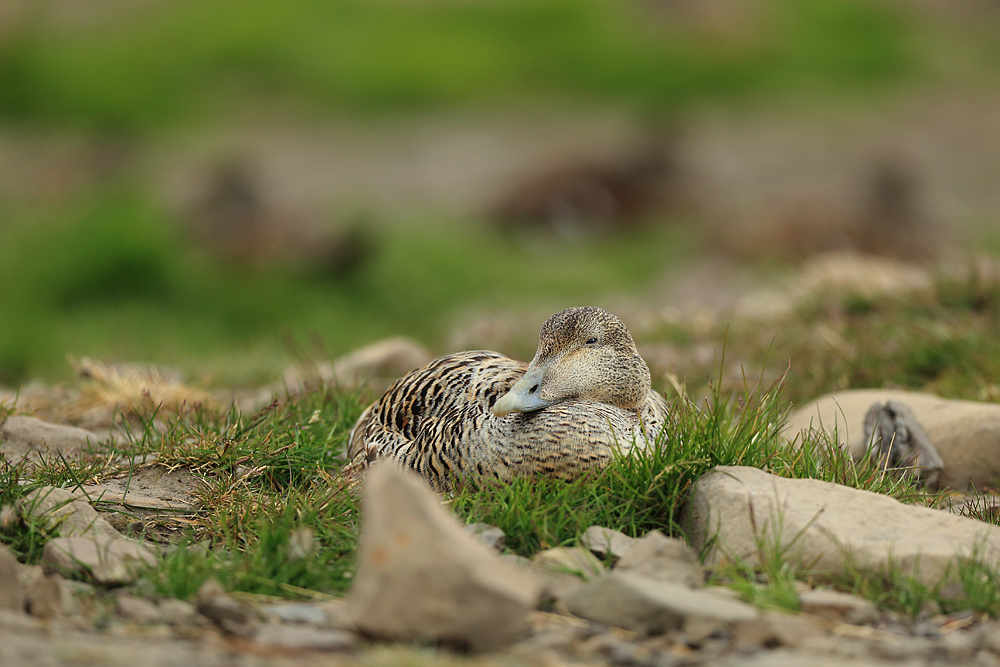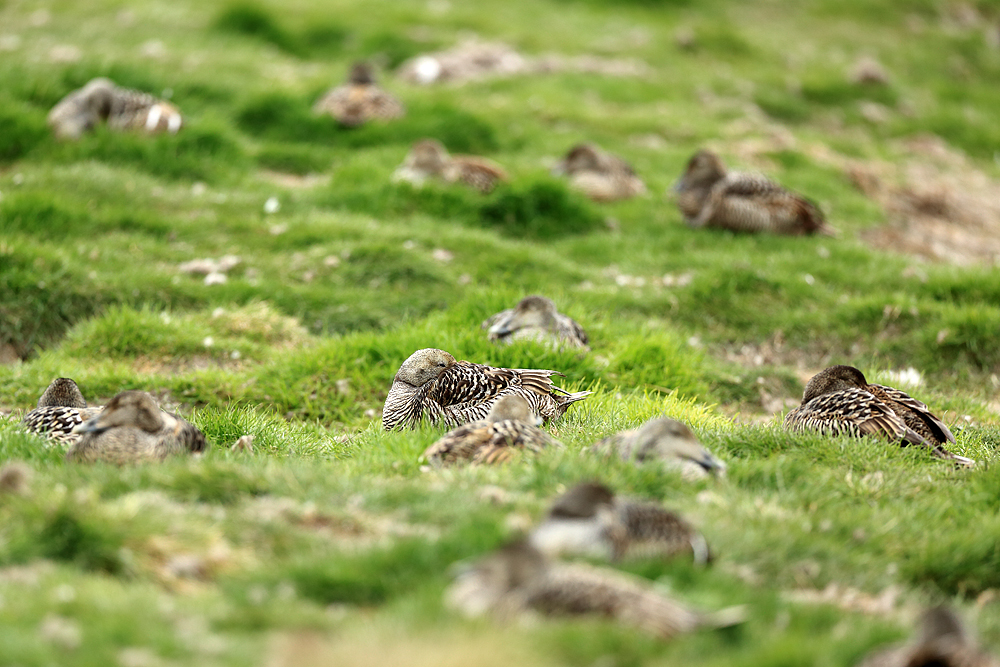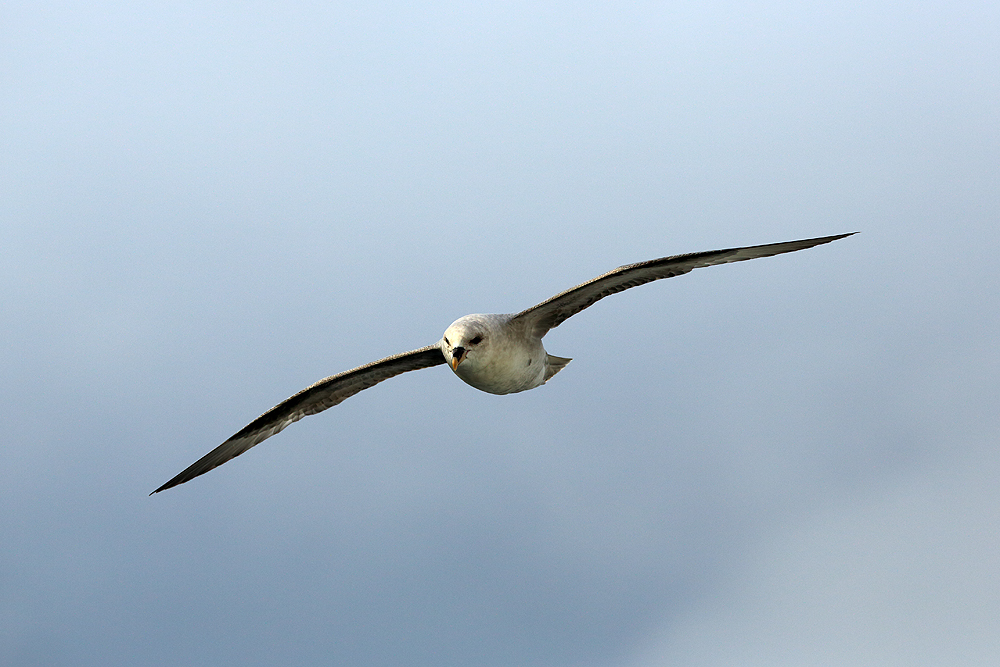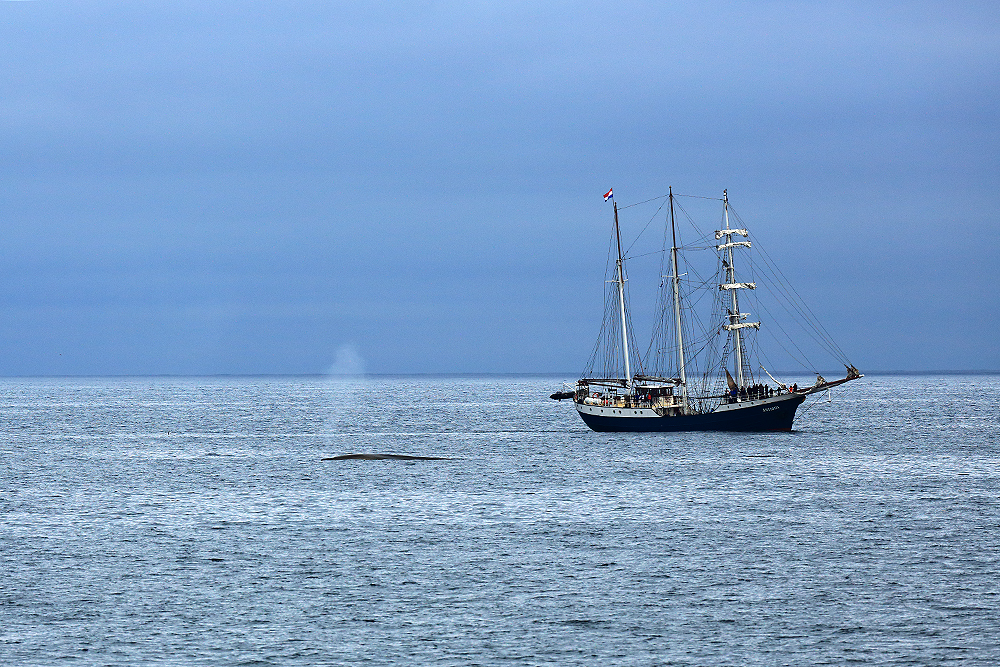|
Our planned landing site for this morning was Kapp Waldburg, a site for nesting Kittiwakes in a steep sided canyon. As we arrived at our landing point we heard over the loud speaker that there was a Polar Bear and we would have to head elsewhere to stretch our legs. From there we headed on towards the tundra habitat at Sundneset, once again as we approached the landing site the Polar Bear call went out again. This bear was very relaxed and the expedition team decided it would be safe to land slightly further down the coast and have the ship keep an eye on the bear's where abouts. As we landed we were greeted by a truly wonderful site, a stunning pair of Grey (or Red) Phalaropes were feeding only yards away from us. The male was particularly obliging, carrying on with its feeding as if we didn't even exist, the female on the other hand seemed to be rather skittish and wasn't a particularly good poser. Unusually for the bird world the female Grey Phalarope is actually the more beautiful. The males take care of the eggs and ensure they hatch before raising the chicks, the female visits a multitude of males and lays her eggs with a few of them ensuring that they have the best chance of survival. As we left the two phalarope to their own devices we headed inland across the tundra and had an unexpected but truly wonderful encounter. A very shaggy Arctic Fox was heading towards us and we were blessed with extraordinarily close views. The fox had not yet lost all of its winter coat and spent a bit of time rolling around doing its best to free itself from its Arctic jumper. There were also a few Svalbard Reindeer within the vicinity but they were all a little nervous around us. After spending a couple of hours on shore and aware that there was still a Polar Bear within the vicinity it was time to head back down to the Zodiacs and transfer back to the Ortelius. As we reached the landing site we realised that the male Grey Phalarope was still feeding and happy to pose for the photographers in the group. After another incredible lunch we set sail for Dolerittneset, the ship anchored and we were once again out on the Zodiacs heading for shore. I joined the hiking group and we climbed up into the misty hills that towered above the water. We really didn't see much except for a few reindeer and a couple of ptarmigan and even Stein (our Norwegian guide) seemed to find the climb hard work. I am sure on another day the views could have been superb but on this day the visibility was less then 20 metres.
We eventually headed back down towards the ship and had a look at the multitude of Walrus bones that littered the shoreline. This was once a great Walrus haulout but unfortunately they were nearly hunted to extinction in this area. There were a couple of individuals on the shore but no longer were there the numbers that once thrived here. Once we were back aboard the ship, we headed for the southern most tip of Spitsbergen and up towards the stunning fjord of Hornsund. This took us all night and most of the next morning but what was in store in Hornsund was something none of us ever expected, it was a day that will stay with me until the day I die ... keep reading to find out what Hornsund had in store.
2 Comments
Today we awoke to some truly stunning scenery to the East and a shroud of mist to the West, the next land stop ... Greenland. We were working our way North to the High Arctic and aiming to visit a Little Auk colony (something I have always wanted to do). These little birds are superbly charismatic and fly in flocks of a few hundred to a few thousand, the colony easily numbered over 50,000 and it was absolutely breathtaking. We arrived on shore, after another short Zodiac transfer, before arriving to the superb guides who were already checking out for Polar Bears. We were greeted by a pair of Arctic Skuas before the numbers of the group grew too big and eventually they flew off to the refuge of the rocky cliffs. We then slowly made away across the rocky scree slope towards the little Auks and the next couple of hours went so so quickly. I could have stayed all day long and photographed these wonderful birds but before I was even settled it was time to head back to the ship. Having packed some of the camera gear away I looked at my watch and realised a couple of hours had passed, it seemed like not time at all. This afternoon there was to be no landing, instead we were to go on a Zodiac cruise from the Ortelius towards a glacier edge. As we boarded the Zodiacs the sun came out, the mist started to clear and we were soon surrounded by an intense blue with the white snowfields and snow-capped mountains. As we started to make our way down this beautiful Arctic fjord we spotted a distant rock moving, as rocks obviously don't move we knew that we must have a seal ... we certainly did, our first Harbour Seal (Common Seal). We daren't approach too closely in case we scared it off so we made sure we left it alone after capturing a few record shorts. The ice in the fjord, which had broken off from the glacier, littered the water and the Zodiac was forced to weave in and out to avoid the larger pieces. We then came across a posing Black Guillemot silhouetted upon the top of small piece of ice as well as a swimming and rather wary of us. The landscapes were just absolutely stunning and I really hope some of the images do it at least a little justice. We also came across an individual Arctic Tern sunning itself in the warm afternoon sun. The Arctic, at this time of year, has 24 hours worth of daylight and that means the wildlife watching doesn't stop after dinner, in fact sometimes the best sightings are when you are getting ready for bed. This was just the first half of our day with plenty more to come ...
With our first night at sea, we were up bright and early for the first of many amazing breakfasts before a briefing on our first Zodiac excursion. This morning we were visiting an area where a historic British marble quarry once operated but is now favoured by Svalbard Reindeer and Long-tailed Skua. This was our first landing and so it was our first time venturing into Polar Bear territory. In fact, it turns out that anywhere on land is bear country as is anywhere at sea! We quickly spotted our first Svalbard Reindeer and we managed to get a few photographs in the gloom of the morning. As we walked across the tundra for the first time we saw plenty of Snow Bunting, our first Red-throated Diver, Long-tailed Duck, Purple Sandpiper, Brent Geese and the stunning Long-tailed Skua! We had a great introduction to the Arctic ecosystem in the morning with our visit to Ny London before having a superb lunch (in fact all the food throughout the trip was just "fantastic"). In the afternoon we would be visiting the northerly town of Ny Alesund where there are breeding Arctic Tern and sometimes some Arctic Foxes, the small settlement is primarily a research centre having originally been built for a coal mine but it is also home to the world's most northerly post office! It was the wildlife that was to feature and we had another yet another Zodiac transfer to the small dock and we were then free to wander (with a perimeter of armed guards around the settlement). A great day all round and a really educational first full day in the Arctic. We knew that tomorrow would be our first day in the "High Arctic" and we were all very excited indeed. Another night's worth of cruising and we would start to be in a really wild landscape!
Where do I begin ... well let's say that I was very lucky to be offered a place on Naturetrek's Spitsbergen cruise, with the staff discount, with only a couple of weeks notice. Of course I jumped at the chance and flew out to Oslo before heading to the Arctic Circle, I could not believe it was all happening. Anyway upon arrival on the island of Spitsbergen, in the charismatic and rather cold town of Longyearbyen, we awaited to board our ship an so I headed off with my colleague Simon to find some local wildlife. It wasn't long before we were being dive-bombed by breeding Arctic Terns, for such small birds this is truly quite disconcerting. As well as the terns there was also a breeding colony of Common Eider (ducks) all nesting in this cool Arctic habitat. So without further ado, here are a selection of images from that afternoon before we headed to our vessel for the trip ... M/V Ortelius. (The light was pretty gloomy so the images are mere record shots.) We boarded the Ortelius, our home for the next seven nights, and attended the mandatory safety demonstrations and drills. It was then time to head out on deck and start our wildlife watching with binoculars and cameras at the ready, we were keen and expectations were high all round. We were followed, almost instantly, by Fulmars (which follow the ship for the possibility of an easy meal) and these provided some challenging but fun photographic subjects. We were only a couple of hours in when the shout went out for whale and sure enough, there were a small group of whales on the horizon. They weren't just any whales ... they were a group of Blue Whale!!!!! So what a first day, I have always wanted to see a Blue Whale and I never expected to see them on this trip. So after staying up until nearly midnight and still have perfect light I made the brave decision to go to bed. The night was uneventful and so I slept through until the next morning where we would go for our first Zodiac excursions.
|
AuthorBret Charman Archives
July 2024
Categories
All
|

